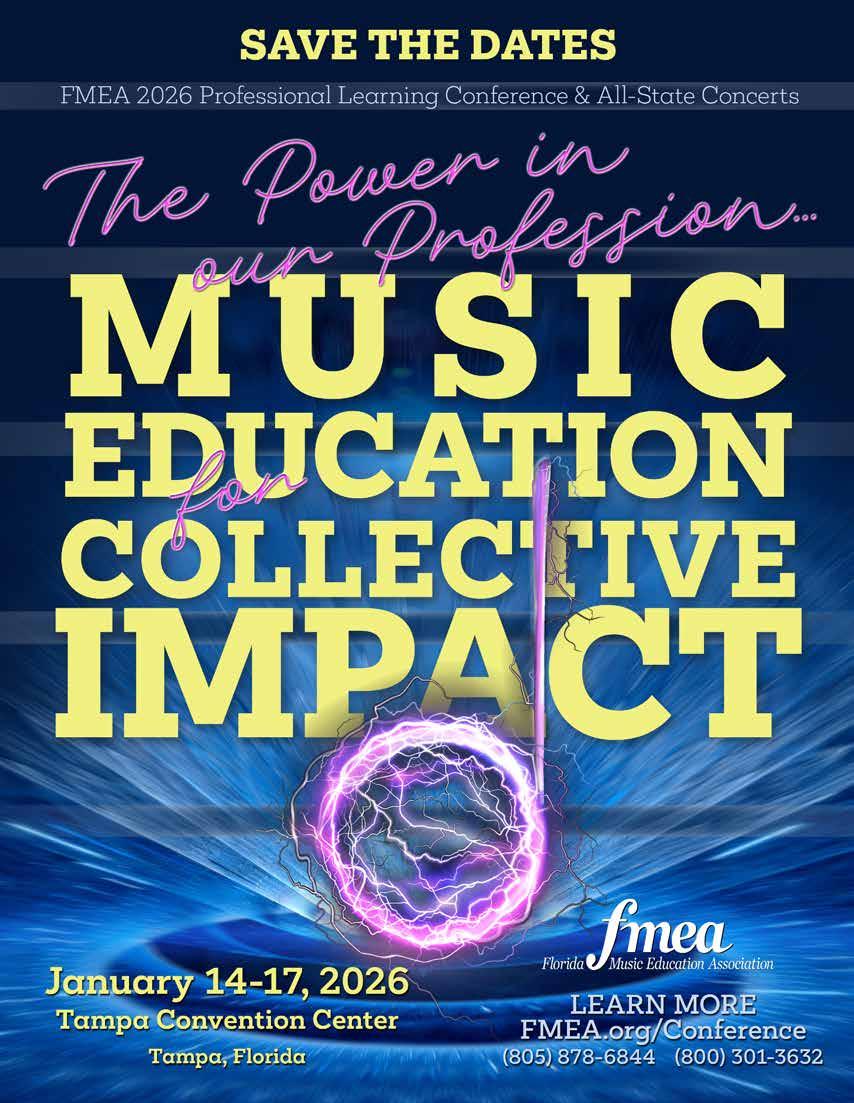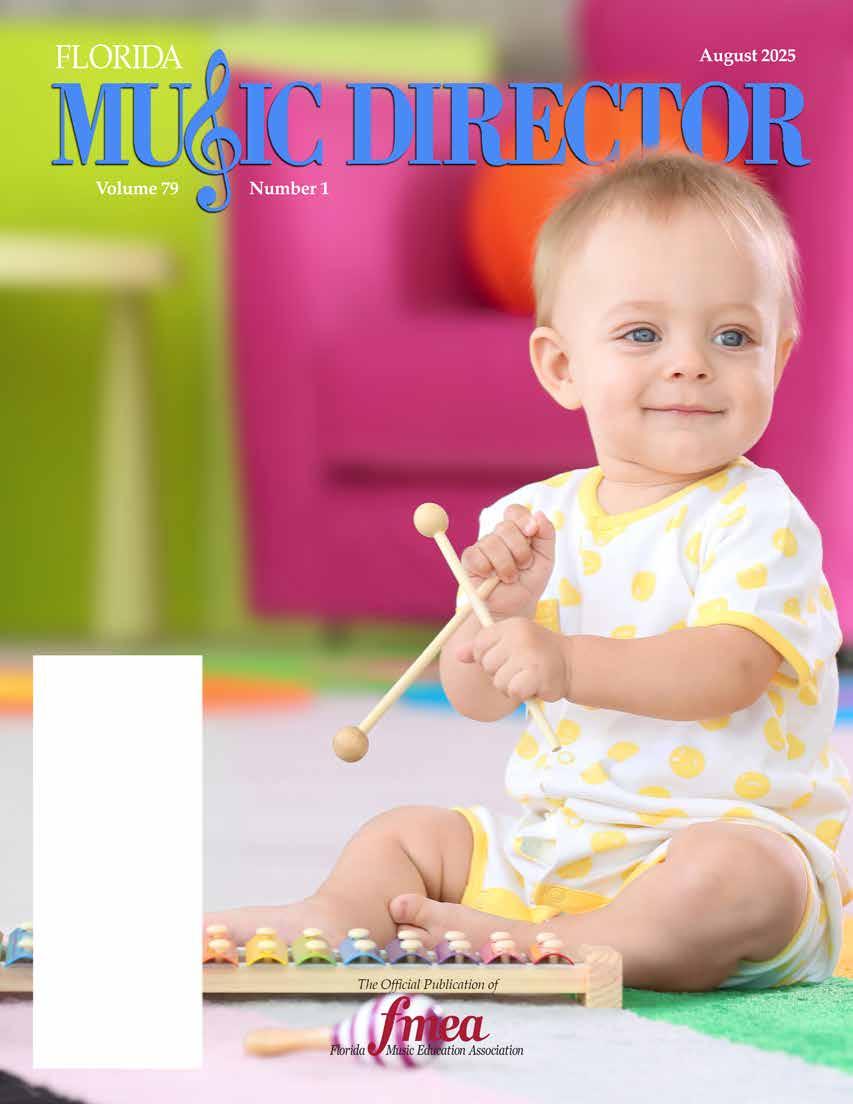

The Best Learning Happens in the Moment
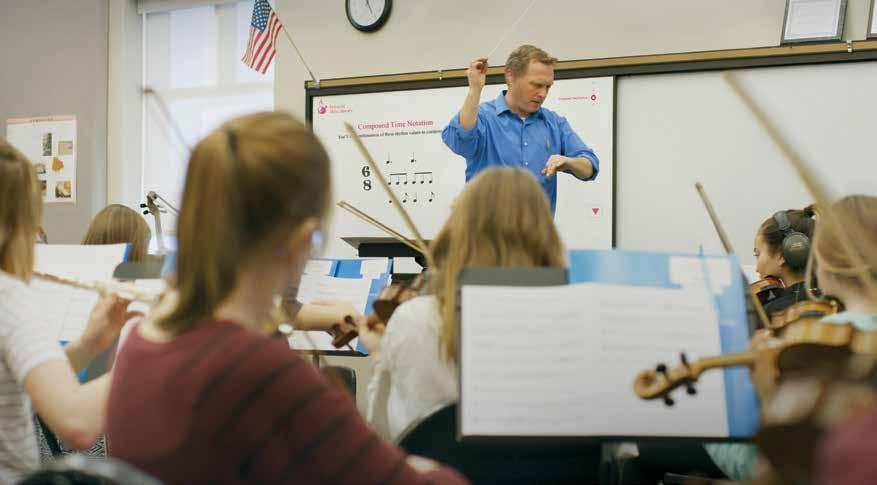
Find What You Need to Teach, FAST!
Your rehearsal time is precious, and every minute counts. But when students hit a roadblock in their understanding — like struggling with rhythms or key signatures — it can slow everything down. Our new feature, Theory On The Go, is designed to keep the momentum going. With access to Breezin’ Thru Theory’s vast resources, you can instantly pinpoint clear explanations, drills or games, create targeted assignments or easily access the full curriculum to build a lesson plan in seconds. Whether it’s for in-the-moment teaching or to support repertoire learning, Theory On The Go is your new go-to tool, because music theory should never slow you down.
Theory On The Go Quickly find Breezin’ Thru content and GO!

Executive Director Florida Music Education Association
Kathleen D. Sanz, PhD Hinckley Center for Fine Arts Education 402 Office Plaza Tallahassee, FL 32301 (850) 878-6844 or (800) 301-3632 (kdsanz@fmea.org)
Editor-in-Chief
Kelly Miller, DMA University of Central Florida 12488 Centaurus Blvd. Orlando, FL 32816-8009 (407) 823-4545 (kelly.miller@ucf.edu)
Editorial Committee
Terice Allen (850) 245-8700, Tallahassee (tallen1962@hotmail.com)
Judy Arthur, PhD Florida State University, KMU 222 (850) 644-3005 (jrarthur@fsu.edu)
William Bauer, PhD University of Florida, Gainesville (352) 273-3182; (wbauer@ufl.edu)
Alice-Ann Darrow, PhD (alifsu@mac.com)
Jeanne Reynolds (jeannewrey@gmail.com)


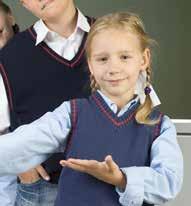
John K. Southall, PhD Indian River State College, Fort Pierce (772) 462-7810; (johnsouthall@fmea.org)
Advertising Sales Valeria Anderson (val@fmea.org) 402 Office Plaza Tallahassee, FL 32301 (850) 878-6844
Official FMEA and FMD Photographers
Bob O’Lary Amanda Crawford Art Director & Production Manager
Lori Danello Roberts LDR Design Inc. (lori@flmusiced.org)
Circulation & Copy Manager
Valeria Anderson, (800) 301-3632
President’s MESSAGE
Harry “Skip” Pardee, EdD President Florida Music Education Association
Leading FMEA Into the Future
Welcometo the start of another wonderful school year! On behalf of the FMEA Board of Directors, I hope you had a restful summer and look forward to an exciting year ahead. As you heard in my video message in July, our board is well-positioned to lead FMEA into the future through thoughtful reflection, data-driven decision-making, and a student focus. The leaders assembled to do that work are truly some of our industry’s most treasured professionals!
While the origin of the following phrase has been debated, the sentiment rings true for leaders charged with making decisions for collective impact: “Society grows when old men/women plant trees in whose shade they know they will never sit.” All of us responsible for leading FMEA know that our decisions as leaders have a transformative impact on the lives of future generations of deserving Florida students, and we are honored to do this work.
As we look to the future, here are some goals we will work toward, in both the long and short terms. Our revised strategic plan will guide this work. For the immediate, short term:
w Compose and disseminate clear procedural pathways for committees, councils, and components that allow for the appropriate affiliation with FMEA per the bylaw revisions of the past year. The board looks forward to reviewing materials from content-specific constituent groups so the composition of our board accurately reflects the rich variety of instruction and ensembles in our state.
w Obtain competitive bid responses from qualified vendors capable of assisting our CFAE staff with a refurbishment of the FMEA website, and begin working toward a more friendly user-interface for our members.
w Continue working with our corporate and academic partners to enhance the exhibition hall experience at our annual conference, and work cohesively with component associations to intentionally plan all-state rehearsal time to include exhibition hall visits.
w Plan an outstanding Collegiate Fall Conference with participation from college music education student colleagues, music supervisors and program leaders,

college music education professors, and other stakeholders.
For the long term:
w Complete our annual financial audit, and confer with our financial advisors regarding FMEA’s short- and long-term investment strategies to safeguard our association’s financial health and vitality.
w Finalize the marketing, branding, and communications strategies into action steps over the course of the working academic year so our association brand can be on the cutting edge.
w Continue building a catalogue of relevant professional learning experiences for members.
w Work with our FMEA Board of Directors, community leaders, and our members in the field to identify potential business partnership and sponsorship opportunities for the FMEA Professional Learning Conference and other key events.
w Continue our pursuit of an unmatched music education experience for all Florida students through outstanding pedagogy, along with perpetual arts education advocacy in all government sectors.
As we navigate world challenges to provide a worldclass education for our Florida students, there will undoubtedly be more unexpected turns, roadblocks, and speed bumps on the road. Rest assured, your FMEA Executive Committee and Board of Directors are working tirelessly to advocate for what is best for students.
Your voice is essential to this ongoing work in FMEA! For any member who would like to book a conversation with me regarding your thoughts, concerns, suggestions, or just to connect, please email me at skippardee@fmea. org. I would love to hear from you.
Have a wonderful start to your school year!
Always musically,

Harry “Skip” Pardee, EdD, President Florida Music Education Association
2025-26 FMEA MEMBERSHIP: You are eligible for membership in the Florida Music Education Association if you are an individual engaged in the teaching, supervision, or administration of music in elementary and secondary schools, colleges, or universities within the state. Visit FMEA. org/membership to learn more about the benefits of active membership.
SUBSCRIPTIONS: Direct correspondence regarding subscriptions to: Hinckley Center for Fine Arts Education, 402 Office Plaza, Tallahassee, FL, 32301-2757. Subscription cost included in FMEA membership dues ($9); libraries, educational institutions, and all others within the United States: $27 plus 7.5% sales tax.
SUBMISSIONS: Article and art submissions are always considered and should be submitted on or before the 1st of the month, one month prior to the publication issue to: Kelly Miller, DMA, kelly.miller@ ucf.edu.
All articles must be provided in digital format (e.g., Microsoft Word). All applicable fonts and images must be provided. Images must be at least 300 dpi resolution at 100% of the size. All submissions must be accompanied by a proof (color, if applicable). Ads may be submitted via email to val@fmea.org.
CIRCULATION: The circulation of the Florida Music Director is 4,500 educators. Published eight times annually by The Florida Music Education Association, Hinckley Center for Fine Arts Education: 402 Office Plaza, Tallahassee, FL 32301-2757. FMEA reserves the right to approve any application for appearance and to edit all materials proposed for distribution. Permission is granted to all FMEA members to reprint articles from the Florida Music Director for non-commercial, educational purposes. Non-members may request permission from the FMEA office.
Advertiser Index
The Florida Music Director is made possible by businesses and organizations that advertise with us. They make it possible to provide you with a high-quality publication, and we gratefully acknowledge their support of our mission. We hope you will take special notice of the following advertisement and consider the products and services offered. It is another important way you can support your professional association and the enhancement of Florida music education.
The publisher does not endorse any particular company, product, or service. The Florida Music Education Association (FMEA) is not responsible for the content of any advertisement and reserves the right to accept or refuse any advertisement submitted for publication. Information for advertisers (rate card, insertion orders, graphics requirements, etc.) can be found at FMEAMediaKit.org Florida Music Director reserves the right to refuse any ad not prepared to the correct specifications OR to rework the ad as needed with fees applied.
ADVERTISER
The advertisers shown in bold
Bernard “Bernie” Hendricks, Jr. President-Elect Florida Music Education Association

Are Ya Ready, Kids?!
BeforeI mention anything regarding the joys of what the new school year will bring, I must pause and say thank you to the members of the Florida Music Education Association for affording me the opportunity to serve in this capacity. It is truly an honor to serve the teachers and students of FMEA, and I look forward to the journey we will take together over the next few years. As for now, it’s time to get back in the classroom and enjoy the many opportunities we have as music educators. As we all head back to our music rooms, please take a moment to reflect on the IMPACT that your music teachers had on you, which will directly correlate to the IMPACT you have and will continue to have on every young person who enters your room. This is what we do, and the theme that President Skip Pardee has presented for the next two years will emphasize just that … the power and impact we have, especially when we work together on all levels of music education.
The new year brings fresh opportunities to do life together with our students through the gift of music. On a daily basis we are fostering creativity in our musical preparation, building community through performance, and enabling camaraderie through our performing ensembles. These everyday, somewhat routine moments are what make our profession so astronomically rewarding and keep us and our students coming back for more day after day. The focus should never be on what you don’t have; simply be grateful and work with what you do have and continue to create powerful, meaningful, and artistic musical experiences for whomever walks through your doors. And please know that your FMEA Executive Board is here to listen, support, and advocate for you in whatever way, shape, or form is necessary. Take care of yourself physically, mentally, and spiritually. You are not on this journey alone as we are built to be in community with others. Wishing you all the best in the new school year, and I look forward to a high-five or fist bump and hearing the stories of success from all over our great state.

Bernard (Bernie) Hendricks, Jr., President-Elect Florida Music Education Association
Advocacy REPORT
Welcome to Our Village –The Power of Collective Impact
It takes a village, the phrase attributed to an African proverb, perfectly describes successful advocacy. Building high-quality, comprehensive school music programs involves gifted teachers, supportive administrators, active parents, engaged and knowledgeable community members, local arts organizations, and informed district and state elected officials. Nurturing and leveraging these relationships have powerful effects. President Pardee’s Collective Impact theme for his presidency is right on target. There is untapped power in our profession.
I am thrilled to welcome Angela Hartvigsen as my FMEA advocacy co-chairperson. Angela is a
great friend and respected colleague who has served on our Advocacy Committee for many years. She will be a great partner in expanding our advocacy efforts for even greater impact. Check out our recent conversation focused on four important questions.
Jeanne Reynolds: Tell me about your life in music and how it informs your advocacy.
Angela Hartvigsen: Both of my parents were music educators and lifelong performing musicians. I had a front-row seat to the impact music had on their own lives, and on the lives of generations of students in the Sarasota County schools. Being a musician was a natural step for me, but I had to discover my love
of teaching music on my own, not just by watching them. Once that spark ignites, it can literally change the world, as it did mine.
Now, as the fine arts program specialist for Sarasota County Schools, I get to champion access to the arts every day. And now, as FMEA advocacy co-chairperson, I’m learning from incredible advocates like Jeanne Reynolds and working to expand my impact even further so that every student in Florida,
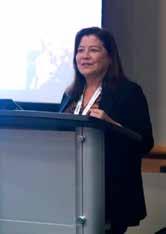
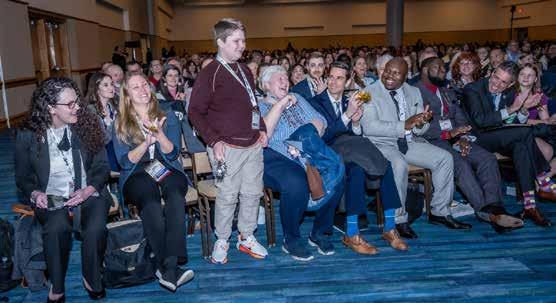
Advocacy


no matter their background, can experience the life-changing power of music.
JR: Sarasota has a thriving arts community and a well-established tradition of supporting the arts and arts advocacy. How does that environment impact your work?
AH: I know I was fortunate to be surrounded by the amazingly vibrant creative community that Sarasota is. As a student, Sarasota’s many arts organizations allowed me to complement my strong school music experiences with additional performing and music-learning opportunities. As a teacher, and now in my current position, I am extremely grateful for the support our Arts and Cultural Alliance and community arts organizations give our schools and our students.
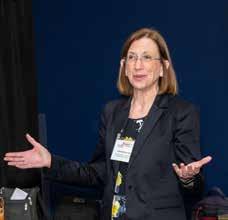
Angela Hartvigsen
Jeanne W. Reynolds
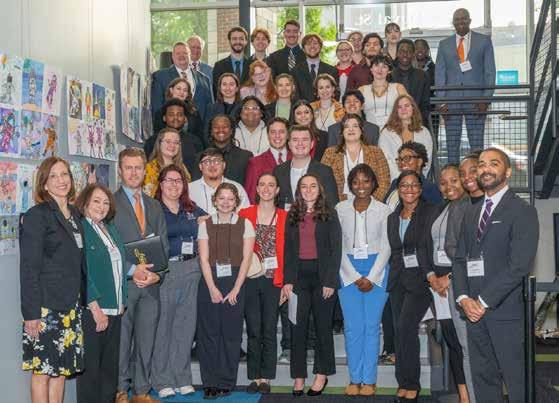
Without the unity of schools and arts organizations working together, students wouldn’t have nearly as many opportunities to expand their skills as they do currently. This environment doesn’t just support my work; it inspires and amplifies it. Knowing there’s a larger community standing behind our mission gives me the confidence to dream bigger, advocate harder, and ensure every student in Sarasota has access to the transformative power of the arts.
JR: How do you think FMEA can better meet the needs of its members by building stronger relationships with state legislators?
AH: I really believe that building strong relationships with state legislators is key to keeping music education front and center in Florida’s schools. When FMEA has a seat at the table, we can advocate for
funding, help to protect teaching positions, and work to shape policies that directly impact our members. One of the most powerful things we can do is share real stories, like inviting lawmakers to see a student performance or visit a music classroom, so they experience the impact firsthand.
It’s also important to connect with legislators consistently and positively, not just when we need something. Those ongoing relationships matter. Senator Joe Gruters, for example, became a strong supporter of the recent change to the marching band/ PE credit legislation, in large part because he already had a relationship with FMEA and a real respect for the arts. You never know where your advocacy allies will come from, so those connections are everything.
JR: As an arts supervisor, you know that advocacy begins at the school level. What advice would you
Your Turn:
If we are going to welcome more folks to our village and enjoy greater collective impact, take a few moments to reflect on those same four topics Angela and I discussed, but centered on you, your school, and your community situation.
1. What’s your story in music? How will you share that story to inspire decision makers?
give our colleagues as they start the new school year?
AH: Advocacy really does start at the school level, and I always encourage teachers to stay positive, and solution focused. It’s natural to be intensely passionate about your own program—that passion is what makes music educators so special, but sometimes we need to take a step back and look at the bigger picture. How can what we do support the school’s overall goals? How can we be part of the solution when challenges come up?
Also, I can’t stress this enough: administrators at all levels are people too. They’re under a lot of pressure, and building a good relationship with them makes a huge difference. If we approach conversations with empathy, respect, and a collaborative mindset, they’re much more likely to listen and support what we’re trying to do.
2. How does your larger community contribute to, or challenge, your success? What’s one community relationship you can nurture to positively impact your program?
3. How can FMEA better meet your advocacy needs at the state (legislation, policy) or local district level?
4. What one specific thing will you do at your school level this year to advocate for and grow your program?
Angela and I are listening, and we are here to serve you. Contact us at jeannewrey@ gmail.com or angelahartvigsen@gmail. com. Let’s welcome more people to our village. And let’s begin to realize the true potential of our profession and the collective impact we can have this year!
2025-26 BOARD OF DIRECTORS
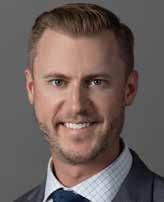
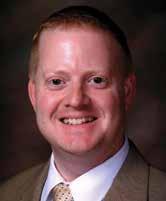
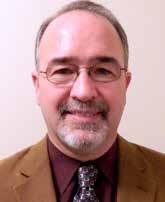
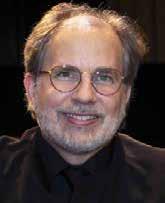

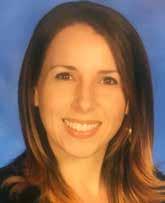
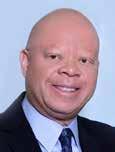

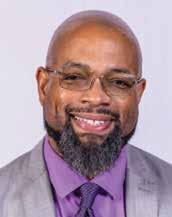
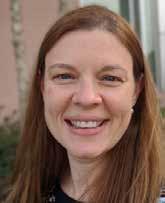
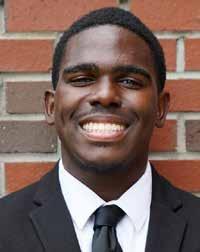
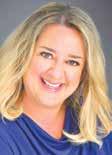
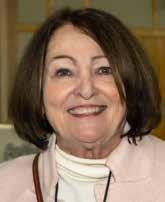
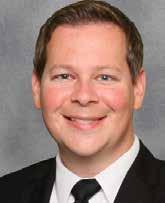
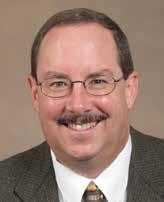
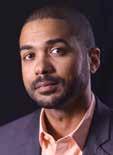
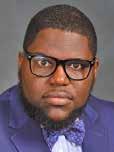
Jeff Cayer, EdD FBA President
Kyle Prescott, DMA FCMEA President
FL-NAfME Collegiate President
John J. Dupuis FMSA President
Andrea Szarowicz FOA President
Jeannine Stemmer FVA President
Meghan Alfaro FEMEA President
Bernard “Bernie” Hendricks, Jr. President-Elect
Steven N. Kelly, PhD Member-at-Large
Jason P. Locker Past President
Kathleen D. Sanz, PhD FMEA/FSMA Executive Director
Harry “Skip” Pardee, EdD President
Kelly Miller, DMA Florida Music Director Editor-in-Chief
Benny L. Bolden, Jr., EdD FSMA President
Mary Palmer, EdD Hall of Fame Chairperson
John K. Southall, PhD Conference Planning Chairperson
Mark A. Belfast, Jr., PhD FL-NAfME Collegiate Advisor
2025-26 COMMITTEE CHAIRPERSONS

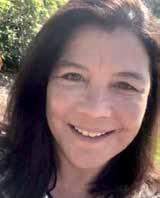
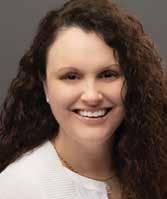


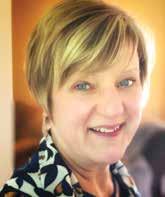
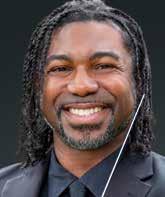
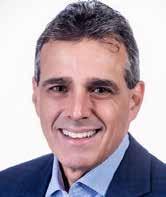
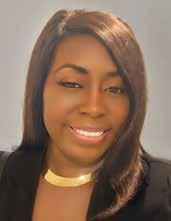
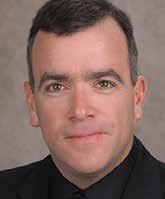
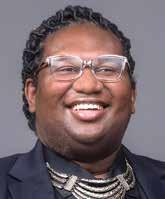
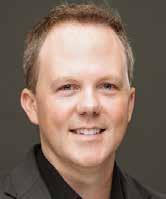

Christine Lapka, EdD Diverse Learners
Sondra A. W. Collins Awards
Harry “Skip” Pardee, EdD Budget/Finance, Development
Dakeyan C. Graham, PhD, EdD, DMA Emerging Leaders
Fred Schiff — Florida Corporate & Academic Partners
Jeanne W. Reynolds Advocacy (Co-Chairperson)
Arnekua Jackson, PhD Multicultural Network
Clint Randles, PhD Contemporary Media

Please take time to thank and support our 2024-2025 Academic Partners.
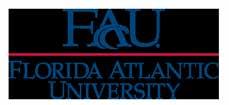



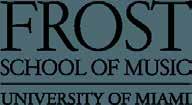
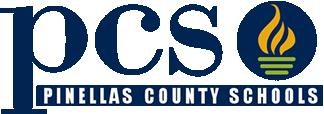
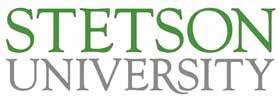



BRONZE PARTNERS
Florida Gulf Coast University
Florida Southern College
Mercer University
Rollins College Department of Music
Partners as of April 7, 2025.
University of North Florida
University of North Texas
The University of Tampa
*Please visit FMEA.org/partners for partnership details or call 850-878-6844.
Benny L. Bolden, Jr., EdD President Florida School Music Association
THE POWER OF PURPOSE: Welcoming a Transformational Year in Florida Music Education
Dear colleagues and friends, it is with great humility, gratitude, and deep respect for our shared mission that I introduce myself as president of the Florida School Music Association (FSMA). As we embark on the 202526 school year, I stand on the shoulders of visionary leaders who have helped build and sustain a legacy of excellence in music education across the state of Florida.
My journey began as a young musician in Miami, molded by passionate educators who saw music not just as a subject but as a way of life. Over the years, I have had the privilege to serve as a music educator, school administrator, and now district leader. Each role has only deepened my conviction that music is not a luxury—it is a lifeline. It cultivates discipline, creativity, empathy, and community. It builds bridges across differences and gives students a voice when words fall short.


As president of FSMA, my commitment is threefold: to elevate our collective impact; expand access and equity in music education; and amplify the power of connection between students, teachers, communities, and the arts. I believe that if we teach and lead with intention, we will inspire a generation of young people to find both their voice and their value through music.
I am excited to work alongside each of you—teachers, administrators, conductors, parents, and students—to ensure that music remains not only a core component of a well-rounded education but also a transformational force in the lives of every student in Florida. Together, we will build, challenge, celebrate, and uplift.
Thank you for the honor of serving. Let’s make this a year to remember.
In harmony and service,

Benny L. Bolden, Jr., EdD, President Florida School Music Association
JUNE M. HINCKLEY
MUSIC EDUCATION SCHOLARSHIP
Applicants were asked to respond to the prompts “Why do you wish to become a music educator?” and “Why should music be available to all students?” Baudek’s essay appears here with minor editing and the addition of a headline.
Inspiring Through Passion and Encouragement
BY AUDREY BAUDEK
MMy name is Audrey Baudek, and I will be attending Florida State University in the fall to pursue a career in choral music education. I want to be a music educator because music brings me joy, and I want to be able to share that joy and continue to inspire others in the way that I have been inspired by my teachers. From a young age, my love for music has been cultivated by the wonderful educators who have shown me what it means to inspire those around you through passion and encouragement. As a choral music educator, I want to continue to share the love I have for music and help to encourage the self-expression that goes along with participating in any sort of music class. I’ve always known that I would pursue a career in music. I’ve taken piano lessons since I was six years old, and have been involved with numerous theater productions since I was ten. However, it wasn’t until I started vol-
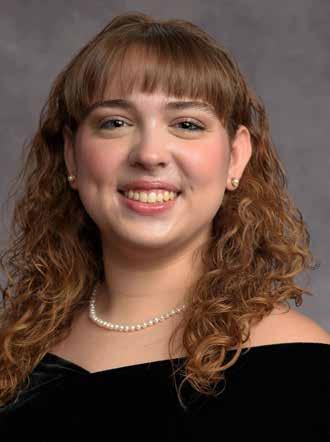
unteering as a production assistant for the youth program at my local community theater, The Henegar Center for the Arts, that I realized I wanted to be a teacher. I participated in the program when I was
younger, and had fond memories of the interns who kept us in line and helped to make the production process a positive experience. Helping out with the same camps I once participated in felt like a way I could give back, and I loved it. I’ve helped out with six youth productions and one mainstage show since then, and nothing makes me happier than seeing the kids succeed and grow into themselves and their talent through the encouragement they receive from interns like me and the directors that work with them. I consider myself extremely fortunate to have even bonded with some of the students who have participated in multiple camps there since I’ve started volunteering, and feel honored when I’m seen as someone these kids can come to for help, advice, or just as a friendly face that makes them feel a little more comfortable during an audition.
It is crucial for young people to understand the transformative power music holds. It can tell stories, evoke powerful emotions, and even offer a different perspective on the world. However, none of that can be taught or conveyed without proper guidance from a teacher who understands how important a positive experience in the arts truly is. I have witnessed firsthand the effect a negative atmosphere can have on the music-making process, and how it diminishes the enjoyment of the students involved. Speaking from personal experience, I understand what it feels like to not be given the opportunity to improve as a musician due to lack of encouragement. In elementary school, my music teacher refused to let me audition for the FMEA Elementary All-State Chorus, and made me feel like I wasn’t worthy of doing what I loved. In seventh grade, I was given the opportunity to audition again and proved to myself that I was capable when I made it. My middle school choir teacher always encouraged me, as has my high school choir teacher, and thanks to their belief in me I have made All-State every year since seventh grade, and All-County every year with the exception of 2021, when Brevard All-County Chorus was cancelled due to COVID-19.
That same belief is what motivated me to keep pushing myself, and led me to perform as a soloist and a student conductor at the 2024 District Solo and Ensemble for chorus this school year. I received a superior rating for my solo performance and an excellent rating for my student conducted piece, which was an experience that further invigorated me to become a choir teacher due to
how rewarding it felt to perform with my peers and guide them through my interpretation of a piece of music. All of the encouragement and support I have received from not just my middle and high school choir directors, but also my voice and piano instructors, have shown me what it means to be a truly good music educator who focuses on uplifting students and showing them what a special community the music world has to offer. All of the things I have learned from them, and the things I have even learned from educators who don’t create the positive atmosphere that is crucial in a learning environment, have allowed me to understand what kind of teacher I want to become. I want to be the kind of music educator that inspires others the way I have been inspired, is a role model to other young people, and shows students how song can be more powerful than just words on their own.
I remember what it felt like during COVID-19, sitting at home facing a computer screen to do my classes, and having to wait almost six months for my district to even allow my choir class to sing outside in the heat, socially distanced and with masks on. I was so grateful to be back in an environment where I thrived, but it was difficult not to feel discouraged by the things that still separated us from singing together like we used to. During COVID-19, I realized how much I had taken for granted because of how easy singing is. Sure, there’s a lot of technicality behind singing well, but using your voice to make music and have fun is such an easy way to connect with others. COVID dissuaded many students from continuing to involve themselves in music
programs because they didn’t know what it really felt like to come together and have the wonderful experience of playing or singing with their peers. But the reality is, once you’ve been involved in a music program and you find yourself having a good time, you have a hard time letting go of that experience.
Music is something that should be available and highly encouraged for all students everywhere. One of the most frustrating things as a music student is that compared to sports and academics, music programs are commonly thought of as less significant. However, music and the performing arts are just as important as any other class or extracurricular activity. Music classes offer students a well-rounded curriculum and support their emotional needs by giving them a place to constructively and safely express themselves. Much like a sports team, music classes also require cooperation and teach students the importance of working with others. In order for the sound of any ensemble to be whole, and for a piece of music to come together, each and every student has to work equally as hard as anyone else. Continually, the community that the students in any music program have is unparalleled. They provide the support system that all students need, yet very few have, and foster relationships and connections between people. Young people need creative outlets like music classes to process their emotions in a positive way because there are few opportunities for students elsewhere. Instead of trying to discourage the arts, they should be seen as a necessary part of any school for the betterment of students’ education.
JUNE M. HINCKLEY
MUSIC EDUCATION SCHOLARSHIP
Applicants were asked to respond to the prompts “Why do you wish to become a music educator?” and “Why should music be available to all students?” Reggi’s essay appears here with minor editing and the addition of a headline.
The Gift of Music
BY CHRISTIAN REGGI
MMusic is the gateway into a person’s inner being. It is the ultimate form of communication, transcending spoken word by taking a story or message beyond its meaning with rhythm and melody. A well written piece, even without lyrics, has the ability to transfigure the mind of listener with certain emotion. It is this innate quality that draws in my curiosity everyday, enveloping my mind.
I was surrounded by a sonic landscape since birth; song was always playing in my home. I have to thank my father for my musical upbringing, always playing pieces by Chopin and Beethoven on our rickety piano and singing silly songs to keep my sister and me entertained. It wouldn’t take long until I’d meander my way onto the piano and pick up singing along the way. I’ve always loved noise and how notes interacted with each other. I would go on to join chorus in fifth grade and now, as a senior in high school, continue to do the thing I love: making music. Calling music my passion would be an understatement. I dreamed of performing when
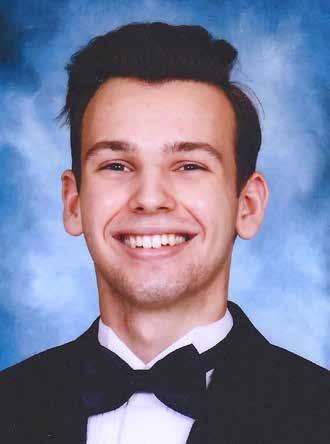
I was young, yet the more I looked into education the more I saw myself being immersed into the world of teaching and composing.
My journey with music, and wanting to become an educator, wouldn’t have been possible without my only sibling, Lillian, who passed away at the age of six from glioblastoma multiforme brain can-
cer. She showed me how music can have an indescribable effect on people. She dreamed of being a teacher, sharing her gift of song with everyone she met. I look back at the time my sister would sing with other kids battling cancer. Noticing the children light up, with some only having months to live, opened my eyes to how music can have a profound effect on others. She left this world leaving a lasting impact through music and bringing joy to others; she is my muse and inspiration to pursue my passion.
My major in college is going to be choral music education. With this degree I will earn a K-12 teaching license where I plan to become a high school choir teacher. Teachers are pivotal to the development of our modern, complex society. In fact, colleges wouldn’t exist without teachers. Students deserve the chance to dive into the expansive world of music. It has the power to connect others. I want to ignite the passion of music in my students, showing them how it can be used as a tool for learning and recreation. I will challenge them
to go beyond the surface level of their songs, finding the deeper meaning and connections with the musical pieces we perform. Teaching is a calling, and I enjoy when students are engaged with content, becoming enthralled with the essence of curiosity. This passion for learning and diving deeper into content will continue with them to college, energizing students to pursue their own interests.
Music is a universal language that is programmed into our bodies since birth. From tapping your foot to a catchy rhythm to singing your heart out to a song, humans are able to connect with each other through it. It is a valuable subject that is irreplaceable. There is no subject in school like it. Students would be losing out on crucial life skills without the inclusion of music in our schools. Without music in the lives of our students, countless opportunities and lessons in life are lost at the cost of saving money.
I have opportunities to regularly conduct chorus class at school. This year I am ELITE show choir president and last year I was chamber choir president; both allowed myself to get hands-on experience of how to run a classroom. I work closely with both of my choral directors, Mr. Jeffry Bogue and Mrs. Miranda Goodwin, to send out important information such as event and music updates, as well as ensuring everyday classroom rehearsal runs smoothly. In their absence, I fill in as director and lead both ELITE Show Choir and Chamber Choir in practice and running through our performance music. In addition, I work diligently to create part tracks and push my peers to achieve success, never settling for mediocrity. Behavior is an integral part in a classroom; I keep class conduct in check, ensuring all members of the choir are
on task and behaving accordingly. I also created and arranged part tracks for two a cappella groups I was in, which in a way was a teaching aspect as I also directed the groups.
Moreover, I also believe that the collective collaboration of all individuals in a group is important for success. A car cannot work if all pistons aren’t firing, and so, too, does chorus fail when everyone is unsure of our goal. In ELITE, I constantly remind them of why they are here and who we represent. I remind them of humility, but also to stay confident as the top choir at our school. We must set the example. Patience is key when making music, and I understand that music can become frustrating, yet I assure them of how their hard work will pay off to keep their confidence high.
Anywhere I go, I sing. Whether it’s for practice or an earworm, I sing. There is something special about it that compels us humans to come together. Music takes years of technique and perfecting to learn only the bare minimum. I have a never-ending hunger for music; I guess you could call me a glutton because I can’t get enough of it. This is what drives me to pursue it. I see how the world right now is hurting with war, political tension, and a myriad of other negative forces constantly being pushed down our throats. People everywhere are filled with fear and despair, convinced no one will hear them. But it doesn’t have to be this way. I want to bridge that gap, to reach out to those who need to understand that they are not alone. I have a gift; this gift is music. Nothing will stop me in my pursuit, just as cancer never stopped my sister, and I look forward to continuing to ignite joy in others through my love of music.
Podcast FL Music Ed

Tales from the Heart of Florida’s Music Education Community
Tune in as we delve into the heart of music education, exploring topics that resonate with our members and beyond.
KEY CONVERSATIONS
Whether you are a seasoned educator or a passionate student, this podcast is for you. With six insightful episodes already available for streaming, there’s no better time to join in the conversation.
Follow “Key Conversations” on Spotify or Apple Podcasts to receive instant updates whenever a new episode drops.




JUNE M. HINCKLEY
MUSIC EDUCATION SCHOLARSHIP
Applicants were asked to respond to the prompts “Why do you wish to become a music educator?” and “Why should music be available to all students?” Womble’s essay appears here with minor editing and the addition of a headline.
Love for Music and the Arts
BY LOGAN WOMBLE
TTruthfully, I couldn’t begin to imagine my life without music. Yes, it is my creative outlet, but it is also what I am most passionate about. Through music and the life lessons I’ve learned on my journey, I have grown as a person and matured as a player and human. Through this comes my need to share what I’ve learned with others. I have been lucky enough to have a band director that lets me do just this, giving me the opportunity to teach and to share my knowledge of music. Being on the podium is exulting; there is nothing else like it. Giving people my energy, watching as the lightbulbs go off, and creating beautiful music through a common determination and bond my colleagues and I share has given me a need to become a music educator. More than anything, I want to share my love for music and the arts. Helping to guide students on this path is a privilege and a period in my life that I can’t be more excited for.
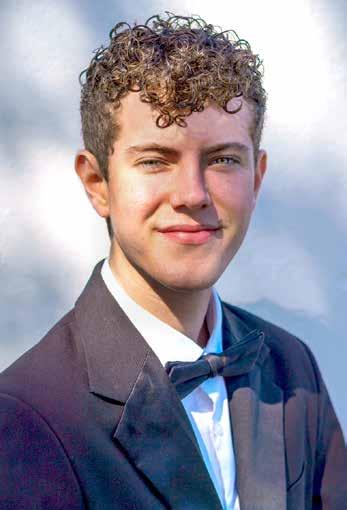
I want to become a music educator because I want to uncover people’s passion for music. It’s everywhere, practically a natural part of our lives. It’s a way to express emotions and feelings, as well as to bring yourself a sense of excitement or
joy. I know the feeling of having a spectacular performance, and I want to give my future students that same thrill. I want them to walk off a stage, not shaking their head frowning, but smiling about what they brought to the table that day and envisioning just how much better the next performance will be. I also want to give students the same inclusive and welcoming environment I have been given throughout my years in high school. Out of everything, this is what gave me my first big pull toward music. The second I walked into band camp, I became part of a strong and loving support system. Through the work of the director and leaders within the program, I felt like I had a second family. I came into high school wanting to quit band, yet I had to stay for more. This isn’t just a feeling that I want to give people, but a feeling that I need to give to people. I need to give people a loving environment, I need to give them support, I need to give them this
spark and this common love for something that can be so raw and real, and I need to help my students not just grow as musicians, but also as people.
What has been super important for me during high school is the connection between my band director and her students. Yes, we are her students, but we’re also her friends. She’s helped guide us all through four years of high school and taught us many lessons in and outside of music, and I want to be able to do this too. Most of all, I want to be able to teach the next generation of musicians and music educators. I want to inspire my students and encourage them to pursue music past middle school or past high school, whether this be as a hobby, or as a career.
In my eyes, music is a fundamental part of education. It’s a proven fact that schools with music programs such as band and choir have a higher graduation rate. This is because it gives students a commitment to something fun and something greater than themselves. When you don’t show up, you aren’t just letting yourself down, but you’re letting your friends down as well. If you have a group project, you’re expected to chip in. The same thing goes into music. It’s one large project, from the day you step into that room, to the day you leave. This encourages students to keep showing up and to keep putting in the effort, as they understand it’s not a minor task at hand.
As well as giving students a reason to show up, music gives them a creative outlet to express themselves. This is essential to all peoples as it can benefit a person’s mental well-being, reduce stress, and promote a healthy way to cope with stronger emotions. From my own experience, I can confirm this is true. When multiple
of my relatives died, I needed music. It gave me a way to express my grief, without bottling up emotions and feeling hopeless, through improvising. Being able to express my pain in such a natural feeling way is the reason why I was able to overcome these emotions. The same thing goes for when I’m feeling happy; it’s reflected in what I play. Maybe instead of playing in a minor key, I might choose to play in major. The lines I play become faster, higher, and overall, more exciting. Furthermore, music creates a very powerful and unique bond between students. Where there is teamwork, there is a family waiting to be made. In general, the performing arts is an amazing example of this concept. You don’t walk into the room to judge others, to sing or play an instrument louder, or to worry about who can act better. You walk in the room to create, uncaring about who else is in that room because at the end of the day it doesn’t matter who it’s with. You are creating something beautiful and unique, and there really isn’t anything as special as this. To create something amazing with someone or with multiple people naturally bonds everyone together. This is because of all the effort that goes in. All the times where there could be humor, frustration, and raw emotions that everyone can experience together. It’s one of those rare experiences where random people of all ages can come together and laugh and be excited for what they’re doing. The most alluring part of most ensembles is that no ensemble will ever be the same. When I perform in honor bands or even in my high school’s band, the first thing I am told is that after the performance, or after the year is up, this group will cease to exist. This is one of the
reasons I fell in love with music. Because just like music is ever changing, so is every ensemble. It will always be different in some way, and that’s extraordinary. Just like gravity, music pulls me in. It’s not just a passion or a hobby, but it’s a desire and something that I am truly grateful for. I want to share my love and my appreciation for music with students and with the world; I want to teach and inspire people to continue playing and performing. I am confident in the future of music and music education, and I am excited to begin my career in the field. Until then, and even past then, I will keep being a sponge, keep learning and being interested, and I will keep working hard and remembering why I want to do what I am going to do.
How do I get to the conference? Making your case to attend the 2026 FMEA Professional Learning Conference
GGetting approval to attend the Florida Music Education Association Professional Learning Conference may require developing a proposal. Due to tight budgets in today’s economy, school principals and districts carefully scrutinize requests to attend professional learning. That does not mean you should not give it your best effort by showing your administrators how your attendance will benefit the students in your school. Rather than assuming your administrators are aware of the critical importance of you professionally benefitting from content-specific sessions, consider submitting a formal proposal. Through this proposal, you can demonstrate how your participation directly relates to the strategies and the objectives of your school (including those beyond the classroom). This will allow you to articulate the need for your continuing education and how it will benefit your students, your school, and you.
Develop Your Case
w Write down three of the most important goals and strategies being addressed in your school’s plan.
w Think about how you personally contribute to those three goals and strategies. How does your work as a music educator affect the overall mission of your school? Make a list of your personal contributions to your school’s goals and strategies.
w Review the conference’s professional learning schedule to better understand how the information provided will support your school’s goals. Mark meetings that relate to your list of personal contributions to the attainment of those goals and strategies,
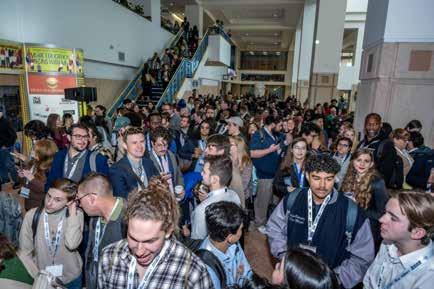
and make note of the clinicians and others you will be able to observe and/or with whom you will be able to interact while at the conference. List the high-quality performances you will observe and from which you will learn. You can download the conference app from the FMEA’s website and bookmark your sessions.
w Write down your case for how attending the FMEA Professional Learning Conference and meeting the people there will help you contribute to your school’s goals and strategies, and use this case with your administrators when making your request to attend the conference.
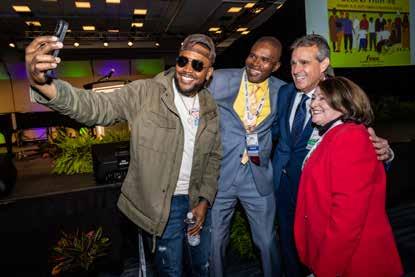
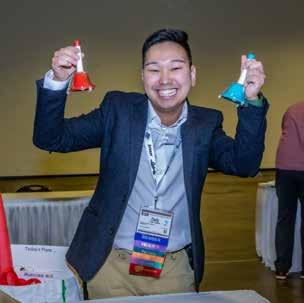
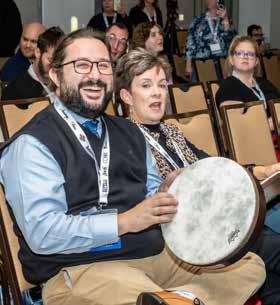
When you create your proposal, in addition to providing a summary of the funding you will need, detail your case for attending. List your school’s goals, download the conference schedule, list the sessions and the clinicians and presenters who will be there, and list the specific sessions you plan to attend. Also, list the performing groups you will have the opportunity to observe during rehearsals with national clinicians as well as the performances by these well-known conductors (from whom you can gain programming and conducting ideas). Additionally, let your administrators know that this conference has more than 10,000 teachers, administrators, students, and parents in attendance, the second largest music education conference in the nation.
Finally, ask your administrators to support you to attend the FMEA Professional Learning Conference in Tampa, Florida, January 14-17, 2026.
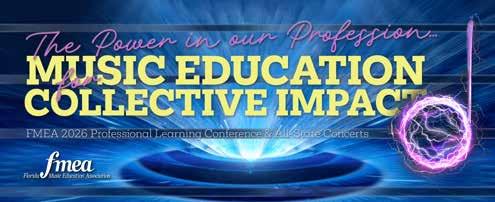
Important Conference Dates & Information
(subject to change)
Early registration opens.
September 12, 2025
Nominations open for Student Conference Experience (FMEA .org/conference/studentexperience/) and Tri-M Experience (FMEA.org/conference/tri-m-experience/).
September 27, 2025 Hotels begin taking reservations at 9:00 am.
October 1, 2025
October 24, 2025
October 30, 2025
Presenters’ deadline for editing session details and requesting A/V equipment
Popular Music Collective submission deadline (FMEA .org/programs/all-state/popular-musiccollective/).
Student Conference Experience nomination deadline (FMEA .org/conference/student-experience/).
November 3, 2025 Hotel room cancellation deadline is 5:00 pm.
November 7, 2025
November 11, 2025
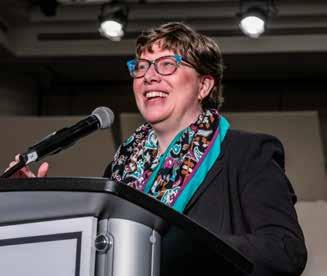
December 12, 2025
Digital Music Showcase submission deadline (FMEA .org/programs/digital-music-showcase/).
Hotels will charge your credit card a nonrefundable deposit for the first night of each room that was not cancelled by the deadline.
Early registration closes at midnight. Prices increase to the regular registration rates. You may continue to register and pay online until the conference.
Postmark deadline for checks mailed to pay for conference registration. After this date, all unpaid conference registrations must be paid by credit card online, or the check must be brought with you to the conference.
All school lodging checks are due to hotels, payable to the hotel where reservations were made for you and/ or your students.
December 15, 2025
The final deadline for discounted hotel blocks; unsold rooms in the FMEA blocks are released back to hotels.
Principles of DALCROZE for Infants and Toddlers Music Class
EBY REY SUNGLAO
Early childhood education forms the foundation of a quality basic education. Spanning the period from birth to eight years old, it is the earliest level of education. It can be divided into three stages according to the child’s development: infants and toddlers (0–24 months), preschool (2–4 years), and school age (approximately 5–8 years). Early childhood has a direct impact on a child’s cognitive, social, emotional, and physical development (UNICEF, n.d.). Additionally, young children are ready to benefit from music. They love to move, explore spaces, and are largely dependent on gestures and movements to express themselves. Bautista et al. (2022) noted that music teaching and learning should be given to young children from this early stage of their development. Further, in recognition of the importance of early childhood, the National Association for Music Educators (NAfME) has music standards for early childhood music education. These standards focus on important musical skills and knowledge that are critical to developing children, such as moving and responding to music, singing and playing instruments, and creating music for children (NAfME, 2014).
The Dalcroze approach is an effective and developmentally appropriate approach to use in early childhood education. Scholars have supported its efficacy (Anderson, 2011; Joseph, 1982; Juntunen, 2016). The approach centers on three main elements that are reflective of essential music standards: eurhythmics, solfège, and improvisation. In this article, I will focus on children aged birth to
two years (infants and toddlers) and their musical development. I will first discuss children’s musical capacities and rationales for music in early childhood education. Then, I will present the Dalcroze method and its elements. Lastly, I will offer suggestions on how the Dalcroze principles may be implemented in early childhood music classrooms, particularly for infants and toddlers.
Rationales for Music in Early Childhood Education
The recognition of early childhood music education can be traced back to as early as the late 1960s. It is manifested in several meetings in the Music Educators National Conference (now NAfME), published articles, and research studies (Greenberg, 1976). Michel (1973) emphasized that the early years of life are significant in both the general music education of a child and the early identification of those who are musically gifted. Gordon (2012) also asserted that the period from birth to 18 months of age is a critical age for music guidance. This sensitive age is sustained until approximately five years of age. Further, what happens from birth through the preschool years has a significant effect on a child for life (Scott-Kassner, 1999). Researchers have demonstrated the role that music has played in child development and its implications for day care and early childhood programs. In Lamont’s (2020) study of musical engagement through movements, Lamont found that the earliest reaction to continued on page 22
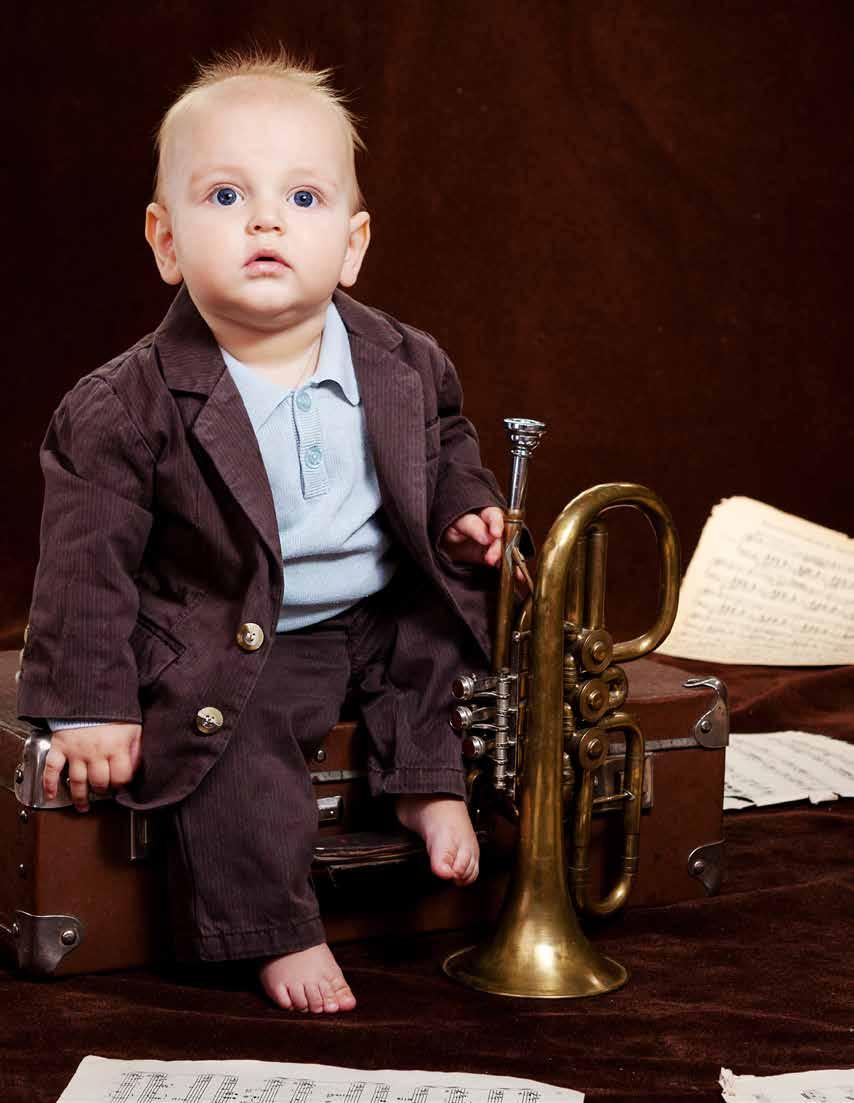
DALCROZE
continued from page 20

music and sound is naturally physical. Therefore, movements are a critical starting point to consider in early childhood years.
Children’s Musical Capacities
This section explores the musical capacities of children aged birth to two years. At this early age, movement plays a foundational role in their engagement and expression in music. Infants and toddlers begin to develop aural skills through listening and responding to sounds. They also show early development in improvisation, such as spontaneous vocal play and movements. These capacities highlight the importance of nurturing musical experiences from these early childhood years.
Moving
Physical activities are an essential part of life, and they are manifested in many forms during the early childhood years (National Association for the Education of Young Children [NAEYC], 2009).
physical activity: stimulating physiological development, creating functional motor ability, and organizing the brain for cognitive processing. Arrasmith (2020) affirmed that infants move in various ways as they acculturate in music: they demonstrate music responses by first listening to music, then moving unrelated to music, and finally trying to move in relation to music. Further, infants and toddlers between five and 24 months do spontaneous movements more frequently with drums and music than with speech (Lamont, 2020). Metz (1989) argued that since musical elements are naturally linked to movement concepts, music through movements may be an ideal medium for music teaching and learning in early childhood education.
Listening and Vocalizing

Rudolf Laban, a movement theorist, asserted that children have a natural tendency to move. It is an inherent inclination in young children. Connecting movement to teaching and learning initiates a mind and body relation that enhances a child’s learning. Furmanek (2014) posited that a child’s happiness is dependent on a rich movement life. Young children endlessly do movements. They can jump, hop, and skip to show their feelings.
NAEYC (2009) identified three primary purposes of
Studies suggest success in training vocal ability and pitch discrimination in the early childhood population (Geringer, 1983). Ilari and Sundara (2009) posited that infants show a clear auditory preference at birth, they recognize and are attracted to the human voice, and they have the capacity to produce a wide range of pitches (Fox, 1990). However, infants’ auditory preferences are not limited to voices, but they also have some clear musical preferences. Infants and toddlers can distinguish two pitches, and this pitch perception becomes more accurate when they reach 24 months (Schwartz, 2008). Children are first introduced to and are responsive to pitch functions that include only two pitches. They typically respond to tonic and dominant functions on both descending and ascending patterns (Gordon, 2013). Infants perform vocal responses to songs that are either familiar or unfamiliar. Their vocalizations evolve as they age, and they use them to express themselves and explore sounds (Arrasmith, 2020). Tafuri (2010) asserted that during the first month, infants produce simple sounds. From about four to six months, they explore their own voice and then lead on to their first word as they reach one year old. Through the expansion of listening abilities, children become aware of the sounds surrounding them. They can recognize and can imitate different world sounds such as wind, rain, a dog’s bark, and other surrounding sounds (Sanchez & Miller, 1991).
Creating
Improvisation in music is a natural way of expression, comparable to conversation in language (Azzara & Grunow, 2010). Infants begin to make vocalizations when they hear sounds. Initially, those vocalizations can be interpreted as random noises. However, with musical communication, those vocalizations translate to music babble that leads to music improvisation (Valerio, n.d.). Humming, a genuine expression for young children, is closely related to singing (Kalmar & Balasko, 1987). Schwartz (2008) noted that children from birth to nine months increase the quality of sound they produce, and they can vocalize pitches and will continue to improve. At 18 months, the vocalization shifts to singing more recognizable pitches and pitch contours.
Filippa and Young (2020) posited that infants and toddlers are motivated to explore sounds through physical interaction with objects. In terms of the use of musical instruments, Reinhardt (1990) asserted that improvisation on musical instruments is a natural musical behavior for early childhood learners where its process allows them to gather and organize their knowledge about music and sound. Coates (2021) asserted that playing musical instruments such as drums is a good option for infants and toddlers as they are durable and helpful for them to experiment with beats and rhythms. More importantly, children at this age can develop structured musical ideas through free play with instruments (Keren et al., 2021).
The Dalcroze Approach
Emile Jaques-Dalcroze (1865–1950) was a professor at the Geneva Conservatory. While teaching, he noticed that his students would exhibit spontaneous movements such as swaying and tapping feet. Dalcroze began to explore these natural gestures and invited his students to walk and move their arms as they sang or listened to music. He called this study of music through movement “eurhythmics” (Dalcroze Society of America, n.d.). Juntunen (2016) posited that Dalcroze initiated his method after realizing problems in music teaching and learning practices. His concern was children in early music education settings were primarily trained to sing and play but seldom to listen. In the late 19th century, Dalcroze dedicated himself to music teaching and learning reformation so that children could develop hearing abilities, especially “inner hearing.” Further, Jaques-Dalcroze believed that music called for body responses. He
incorporated body movements in his pedagogy to allow musical experiences to be more embodied (Juntunen, 2016). The Dalcroze approach is divided into three core principles: eurhythmics, solfège, and improvisation:
Eurythmics
Dalcroze eurythmics provides a holistic approach to music by engaging one’s mind and body. It is listening and responding to music through movements. Anderson (2011) posited that eurythmic activities can start internally where a child is encouraged to internalize and explore rhythm by movements. Moreover, by moving and responding to music, children become more active in communicating their intellectual and emotional responses (Sanchez & Miller, 1991). Developing body placement, balance, locomotive movement, and coordination are the emphasis in teaching young children, and the Dalcroze approach uses body movements to improve overall motor skills and body coordination (Juntunen, 2020).
Solfège or Ear-Training
A strength of the Dalcroze approach is the development of ear-training skills (Mead, 1994). Juntunen (2016) asserted that Dalcroze believed that music teaching and learning should emphasize listening skills and that it is important to start at as early an age as possible (Juntunen, 2016). Jaques-Dalcroze (1930) asserted that the ear is the recipient of music and that it should be trained to realize and discriminate sounds and rhythm. Developing the listening ability at an early age is Dalcroze’s advocacy (Sanchez & Miller, 1991).

DALCROZE
continued from page 23
Music teachers can help students become better listeners and musicians via Dalcroze solfège techniques (Thomsen 2011). The aim of solfège is to develop one’s skills in listening, hearing, responding, singing, playing, and remembering. Dalcroze solfège is based on the fixeddo system to develop pitch memory and to teach pitch interrelationships and pitch functions (Dalcroze Canada, 2022). Furthermore, pitch functions in a Dalcroze-inspired classroom may involve showing a pitch level with the use of hand movements (Juntunen, 2016).
Improvisation
Improvisation is an essential part of the Dalcroze approach. It encourages musical expression and improves creativity (Anderson, 2011). Kalmar and Balasko (1987) posited that the early childhood years are crucial in creative development. It is also in these years when children first try to explore things that are new and interesting to them. The same process is seen in the way children create sounds. Just like speaking, improvisation should be encouraged as a natural form of expression (Kalmar & Balasko, 1987). In the Dalcroze classroom, students are invited to express their musical ideas using their voices. They are also encouraged to use musical instruments and even body movements when improvising (Mead, 1994).
O’Neill (2013) posited that improvisation has been used in early childhood classroom activities. Every child is an
improviser, as shown in their natural behavior during early childhood (Azzara & Grunow, 2010), and teachers can use improvisational skills in their classroom to achieve a goal of creative, holistic, and playful interventions with children.
Suggestions for Practice
Dalcroze is an appropriate approach for early childhood education (Reinhardt, 1990). “The ideas of Dalcroze pedagogy can be applied to all levels of music education, including early childhood education programs and community settings for newborns” (Juntunen, 2016, p. 19). The Dalcroze approach has had a broad range of application, and its use in early years learning focuses on the needs and potentials of children, including infants and toddlers (Dalcroze Australia, 2022). Importantly, the application of the Dalcroze approach as an effective and developmentally appropriate approach in early childhood music education has displayed favorable results (Joseph, 1982).
In this section, I offer suggestions for early childhood music educators on how to implement the principles of the Dalcroze approach in their classrooms. These suggestions are informed by my past observations of music classes for infants and toddlers. While it was not explicitly stated that the teachers I observed used the Dalcroze approach, I recognized the elements of its principles in their teaching practices.
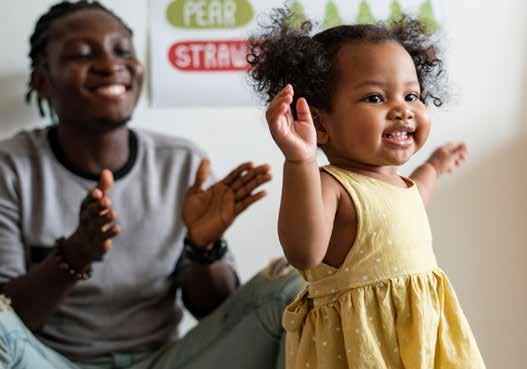
Movement/Eurhythmics
Teachers may consider encouraging parents/ caregivers to act as an extension of their child’s body during movement activities, especially in music classes for infants and toddlers. Steady beat is a basic musical element that is important to establish at an early age. It is beneficial to introduce a steady beat early through simple actions like clapping along with familiar songs, particularly during routine songs (good morning and goodbye songs). However, while this is essential, infants and toddlers may not be ready to perform a steady beat. Therefore, parents/caregivers can support this experience by guiding their child’s hands in clapping the beat.
Parents/caregivers play a critical role in introducing sensorimotor movements. These activities may include bounces, tickles, and
jiggles, and may be accompanied by music. For example, classical music can be used to experience rondo form by assigning different sensorimotor movements to each section. Parents/caregivers might bounce their child during the A section, sway side to side during the B section, and sway forward and back during the C section. Rhymes can also be assisted with gentle touch, inviting the adults to tap their child’s fingers, toes, and belly, finishing with a playful tickle. Songs like “Tideo” are also well-suited for movement exploration. Adults in the class can carry their child in a circle and pause and jiggle them on the words like “jingle.” Lastly, free movement activities accompanied by music and props, like scarves and ribbons, can be an engaging way for children and their parents/caregivers to explore movements and music together. These interactive and playful activities support musical development while fostering a stronger parent/caregiver-child bond.
Solfège or Ear-Training
To support children’s aural development, consider incorporating both toys and real instruments, such as hand drums, into sound exploration activities. Another helpful way is to use engaging songs that prompt children to experiment with and experience a variety of sounds. This can include both environmental, animal, and body sounds. Since infants and toddlers may not always be able to produce sounds on cue, one effective approach is to invite adults to model familiar sounds. For example, teachers can invite the adults to mimic familiar noises such as a dog’s bark, a cow’s moo, a lion’s roar, or a cat’s meow. Similarly, they can explore sounds using their own bodies, like coughing, sneezing, shouting, or whispering. In terms of supporting children’s experiences with pitch, teachers can introduce a scarf activity using a vocal scale of Do-Re-Mi-Fa-So-La-Ti-Do. As the scale ascends, encourage the adults to guide their child’s hands and move the scarves freely, creating motions such as wiggles, circles, or floating gestures to match the rising tones. On the tonic of the descending scale, teachers can invite the children and their parents/caregivers to gently place the

scarves on the ground, reinforcing the idea of musical direction and resolution. Further, since infants and toddlers are responsive to tonic and dominant pitch patterns, teachers can engage the children by singing So-Do patterns while using expressive hand gestures, such as lifting hands for So and tapping the floor for Do.
Teachers can also consider explaining the musical concepts behind each activity to the parents/caregivers. This will help them see how playful movements support children’s developing sense of pitch through experiential learning. This communication can strengthen the home-school connection. Importantly, encourage parents/ caregivers to reinforce such activities in their home, for instance, by using transition songs with So-Mi-Re-Do melodic patterns:
DALCROZE
continued from page 25
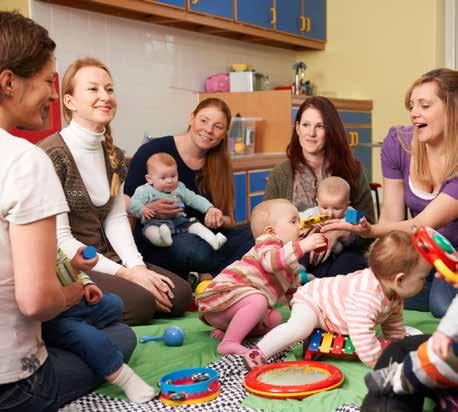
Improvisation
Teachers can consider encouraging improvisation through sound exploration by making toy instruments readily available at the beginning of the class. For example, place a large bin of toy instruments at the center of the room. This invites the children to explore sounds in their own way. Infants and toddlers may initially want to mouth the toys, but they often begin to engage by shaking, pressing, or tapping them to discover the sounds they can produce. In addition to instrument play, teachers can invite children and the adults to improvise with scarves, ribbons, or bell bracelets during free movement activities. This activity often leads to a joyful dance and spontaneous movement, creating an engaging and developmentally rich experience.
In supporting rhythmic awareness, teachers may use a hand drum to guide a “walk and stop” game, inviting children to move and freeze with drum cues. At the end of the activity, each child can be invited to the center of the circle to improvise and create sound on the hand drum. Naturally, infants and toddlers may need guidance from their parents/caregivers in encouraging and supporting their child in participation. This support helps children feel safe and confident as they explore musical expressions.
Conclusion
Infants and toddlers are born with a music potential, and early interactions with music may affect their music achievement positively. The musical activities I suggested for infants and toddlers class are guided by parents/ caregivers. The role of the adults is essential as they help in enhancing the musical experiences by deepening their understanding of the child’s musical development (Arrasmith, 2020). Feierabend (1996) asserted that the responses expected from infants are different from those of toddlers. Infants can be passive as they are still constructing knowledge through absorption. However, during activities, toddlers usually take a more active role. The objective is to offer young children enough interactions with music. The teacher and the parents/caregivers are critical in this process as they assist in developing appropriate musical experiences for the children. While teachers may have different methodological approaches, the principles of Dalcroze: eurhythmics, solfège, and improvisation may be implemented in early childhood music classes, particularly for infants and toddlers. Eurhythmics can be applied through routine songs accompanied with clapping and other activities promoting movements. Solfège or ear-training, on the other hand, can be incorporated through sound exploration and the use of pitch functions. When it comes to improvisation, parents/caregivers and the children can be creative through free movement activities. Further, children are allowed to explore sounds and improvise through toy instruments and real musical instruments.
Juntunen (2016) asserted that the Dalcroze method is an effective tool for music teaching and learning. The effectiveness of Dalcroze and its incorporation in the early childhood classroom can greatly enhance children’s musical development. There is a limited study on the efficacy of the Dalcroze approach to a music class for infants and toddlers. However, since the period from birth to 18 months of age is a critical and sensitive age for music guidance (Gordon, 2012), infants and toddlers may benefit from a music class where the Dalcroze principles are implemented. It may be valuable for future research to explore how infants and toddlers respond to Dalcrozeinspired music classes. Further studies could help evaluate the effectiveness of the Dalcroze approach in supporting early child growth, offering insights that could inform early childhood music educators and curriculum designers for this age group.
Rey Sunglao is a PhD in music education student at Frost School of Music, University of Miami. He holds a double master of music in music education and double bass from Eastman School of Music, University of Rochester. His research explores sociocultural issues, double bass pedagogy, and Philippine music education.
References

Anderson, W. T. (2011). The Dalcroze approach to music education. General Music Today, 26(1), 27–33.
Arrasmith, K. (2019). Infant music development and music experiences: A literature review. Update: Applications of Research in Music Education, 38(3), 9–17.
Azzara, C. D., Grunow, R. F. (2010). Developing musicianship through improvisation. GIA Publications.
Bautista, A., Yeung, J., Mclaren, M. L. and Ilari, B. (2022). Music in early childhood teacher education: Raising awareness of a worrisome reality and proposing strategies to move forward. Arts Education Policy Review, 1–11.
Coates, B. (2021). Benefits of musical instruments for babies and toddlers. Melbourne Music Centre. https://www. melbournemusiccentre.com.au/blogs/news/benefits-ofmusical-instruments-for-babies-toddlers
Dalcroze Australia (2022). Dalcroze applications. Dalcroze Australia. https://www.dalcroze.org.au/dalcroze-applications
Dalcroze Canada (2022). Dalcroze eurhythmics. Dalcroze Canada. https://www.dalcrozecanada.com/index.php/en/home/about/ dalcroze-eurhythmics
Dalcroze Society of America (n.d.). Emile Jacues-Dalcroze. Dalcroze Society of America. https://dalcrozeusa.org/aboutdalcroze/what-is-dalcroze/emile-jaques-dalcroze/
Dalcroze Society of America (n.d.). Branches of Dalcroze education. Dalcroze Society of America. https://dalcrozeusa. org/about-dalcroze/branches-of-dalcroze-education/
Feierabend, J. M. (1996). Music and movement for infants and toddlers: Naturally wonder-full. GIA Publications.
Filippa, M., & Young, S. (2020). Playing with sounds in the first years: Relevant research and pedagogical propositions for early childhood music education. International Journal of Music in Early Childhood, 15(2), 183–197.
Fox, D. B. (1990). An analysis of the pitch characteristics of infant vocalizations. Psychomusicology: A Journal of Research in Music Cognition, 9(1), 21–30.
Furmanek, D. (2014). Preschool through grade 2: Classroom choreography: Enhancing learning through movement. YC Young Children, 69(4), 80–85.
Geringer, J. M. (1983). The relationship of pitch-matching and pitch-discrimination abilities of preschool and fourth-grade students. Journal of Research in Music Education, 31(2), 93–99.
Gordon, E. (2012). Learning sequences in music: skill, content, and patterns. GIA Publications.
Gordon, E. (2013). A music learning theory for newborn and young children. GIA Publications.
Greenberg, M. (1976). Research in music in early childhood education: A survey with recommendations. Bulletin of the Council for Research in Music Education, 45, 1–20.
Ilari, B. & Sundara, M. (2009). Music listening preferences in early life: Infants’ responses to accompanied versus unaccompanied singing. Journal of Research in Music Education, 56, 357–369.
Jaques-Dalcroze, E. (1930). Eurhythmics and its implications (F. Rothwell, Trans.). The Musical Quarterly, 16, 358–365.
Joseph, A. S. (1982). A Dalcroze eurhythmics approach to music learning in kindergarten through rhythmic movement, eartraining and improvisation. [Dissertation, Carnegie Mellon University].
Juntunen, M.-L. (2016). The Dalcroze approach: Experiencing and knowing music through the embodied exploration. In C. R. Abril & B. Gault (Eds.), Approaches to teaching general music: methods, issues, and viewpoints. Oxford University Press.
Juntunen, M.-L. (2020). Ways to enhance embodied learning in Dalcroze-inspired music education. International Journal of Music in Early Childhood, 15(1), 39–59.
Kalmar, M., & Balasko, G. (1987). Musical mother tongue and creativity in preschool children’s melody improvisations. Bulletin of the Council for Research in Music Education, 91, 77–86.
Lamont, A. (2020). Moving towards music: Viewing early years musical engagement through the lenses of movement, interaction, motivation, agency, identity and context. International Journal of Music in Early Childhood, 15(1), 25–38.
Keren, I., Gilboa, A., & Cohen, V. (2021). The emergence of musical structures in instrumental free play of toddlers. International Journal of Music in Early Childhood, 16(1), 7–25.
Mead, V. H. (1994). Dalcroze Eurhythmics in today’s music classroom. Schott Music Corporation.
Metz, E. (1989). Movement as a musical response among preschool children. Journal of Research in Music Education, 37(1), 48–60.
Michel, P. (1973). The optimum development of musical abilities in the first years of life, Psychology of Music, 1(2), 14–20.
National Association for the Education of Young Children. (2009). Developmentally appropriate practice in early childhood programs serving children from birth through age 8. https://www.naeyc.org/sites/default/files/globally-shared/ downloads/PDFs/resources/position-statements/PSDAP.pdf
National Association for Music Educators. (2014). 2014 Music standards (PK-8 General Music). https://nafme.org/ wp-content/uploads/2014/11/2014-Music-Standards-PK-8Strand.pdf
O’Neill, B. E. (2013). Preschool: Improvisational play interventions: Fostering social-emotional development in inclusive classrooms. YC Young Children, 68(3), 62–69.
Reinhardt, D. A. (1990). Preschool children’s use of rhythm in improvisation. Contributions to Music Education, 17, 7–19.
Sanchez, M., & Miller, J. K. (1991). Dalcroze, Montessori and preschool music teaching. American Music Teacher, 40(6), 24–58.
Schwartz, E. (2008). Music, therapy, and early childhood. Barcelona Publishers.
Scott-Kassner, C. (1999). Developing teachers for early childhood programs. Music Educators Journal, 86(1), 19–25.
Tafuri, J. (2010). Infant musicality, new research for educators and parents (1st ed.). Routledge.
Thomsen, K. M. (2011). Hearing is believing: Dalcroze solfège and musical understanding, Music Educators Journal, 98(2), 69–76.
UNICEF. (n.d). Early childhood education. https://data.unicef. org/topic/early-childhood-development/early-childhoodeducation/
Valerio, W. (n.d.). The Gordon approach: Music learning theory. https://www.allianceamm.org/resources/gordon/
Welcoming a Guest to Work With Your Band The Clinician
TThere’s something unforgettable about our first-year teaching. Each of the challenges we faced had a profound impact on the educators we would become, and the victories—even the smallest of them—felt extraordinary. This was certainly true for me during my first year as a high school band director in a rural Michigan town. I still remember the snow falling on Lake Michigan as the marching season ended. The holiday concert was a success, and soon afterward we turned our focus to preparing for band contest. It was sometime in mid-January that I received an email from a retired teacher who lived nearby. She said she had worked with my band as a clinician in previous years and offered to stop by once more. I normally respond to emails within a day, but this one took a bit longer. What was this person after? Would my students respond well to a guest? Should I wait to bring them in? Every rehearsal is precious after all, and I didn’t want to lose a minute. I asked a valued mentor her opinion and after a gleaming recommendation, I cautiously invited this guest to work with my students.
I was nervous to welcome anyone to my classroom, but those worries were unwarranted. This clinician was a pleasure to work with, treated my students with respect, and provided actionable and helpful comments for the group—and for me—to work on. Throughout the years I would have her back, as well as several other retired directors, friends, and colleagues to work with my students. Each provided valuable feedback and, as they worked with my bands, gave me an opportunity to step back to gain
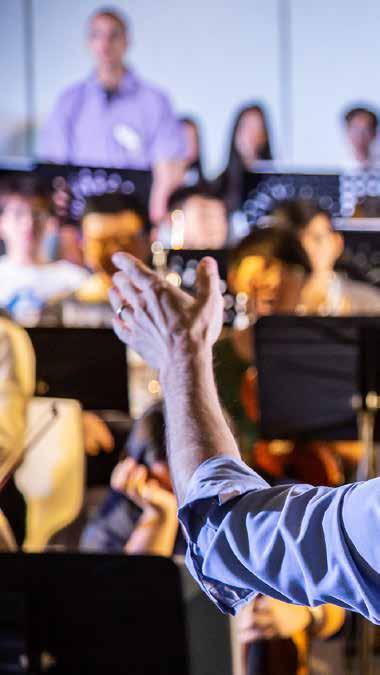
some perspective. I would not be the educator I am today without them. The purpose of this article is to encourage music teachers in Florida to open their classroom doors to guests and provide a few tips on making this the best experience it can be for you and your students.
Is In
BY MARC DECKER, DMA
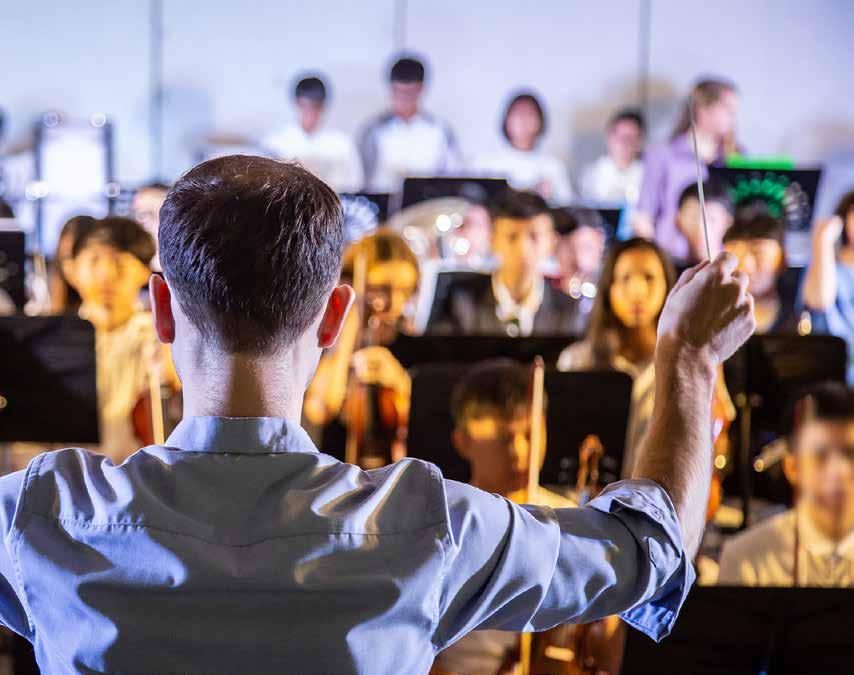
Whom to Invite as a Clinician
There are many different colleagues that can be excellent clinicians to invite to your classroom, each with their own perspective and expertise to share, including retired teachers, colleagues from nearby schools, and feeder
program directors, to name just a few. Much of the decision on whom to invite depends on what you want your students to gain, so here are a few thoughts as you search for someone.
continued on page 30
The Clinician Is In
Retired band directors are master teachers with tremendous knowledge and experience. What makes them remarkable is not just the wisdom they bring as a clinician, but their motivation. They are often eager to help for a day because they have a strong connection to your community and want to reconnect with you, the school, and students. The feedback they provide is excellent, but just as important is that they can serve as a mentor, and we all need a little mentorship. If you are new to your school and don’t have any connections, ask around. You will be surprised by the highly experienced but still very active retired individuals living in your community.
Active teachers are also great to invite to the classroom. I had one friend come in each year from a nearby school who had great comments for my students. We were both about the same age and experience, but his approach on the podium was different than mine. I learned a lot watching him, and my students were able to experience someone on the podium with a different teaching style. Find a colleague you trust and invite them in. It’s very possible the school district will consider the time away as professional development for your colleague.
It is never too early to invite a guest to work with your students! … they can define key concepts for developing superior fundamentals and set your students up for long-term success. “ ”
Finally, it is great to invite your feeder program directors, or the directors of the schools you feed into. As a high school teacher, the middle school director I worked with had a special connection with my students. They weren’t just comfortable with her instructional style; they loved her and treasured the memories working with her in middle school. In exchange for a visit or two from her each year, she would let me clinic her eighth graders, and this helped with retention as her students transitioned into high school. Likewise, the nearby college directors were always eager to talk with my seniors about continuing to play their instruments in college and were happy to provide a clinic in exchange. There are plenty of experienced folks willing to visit your school for an afternoon who genuinely want to help your students and strengthen their relationship with you and your students.
We haven’t yet talked about payment for clinicians, and that’s because it depends. If you have a budget to invite guests, then you should offer. But if not, there are many other ways to show your appreciation. One of the retired directors I would often invite taught applied lessons in the area, so the payment she expected was a few minutes at the end to advertise her lessons and to leave a stack of brochures for the students. I believe everyone appreciates a group photo at the end and a kind social media post. In summary, don’t let a limited budget stop you from asking someone to visit.
What Can You Expect From a Guest Clinician?
Guests always provide meaningful feedback, and throughout the years I noticed that most comments would fall into three categories. The first of these, which is both the most common and my personal favorite, is when a guest says something to the students you’ve told them dozens of times before, but for some reason, they finally do it! I can’t fully explain this phenomenon. It could be the way the guest phrases the feedback, or perhaps the students are extra attentive when a guest speaks. Regardless, when you hear your words parroted by a guest, the students will look over at you for a quick chuckle before finally deciding to do it.
The second most common comments are when a guest works on things we haven’t gotten to yet, or occasionally on something we haven’t noticed. I love it when a guest does this because there are many ways to approach rehearsal and work a band. This is particularly important for new band directors in their first few years, but it’s true even of the most experienced directors. I tend to address fixing musical challenges in a very specific way, addressing fundamentals often at great length before going on to other components of musicianship; however, it is refreshing to see another director jump right into something that we haven’t gotten to or thought of yet. Experiences like this have a profound impact on all of us, shaping us into more impactful educators.
The final category for feedback from clinicians is the most uncommon and the one we fear the most. What if a guest says something we disagree with? I can recall on one hand the extremely few times this happened to me, but it was never a problem. The most egregious was a clinician who I adored that insisted articulations in march style be much too short for my taste. It was almost a staccato style that was highly precise, but I feel lacked
the full resonant sound of wind instruments. After she would leave, I simply changed it back to the way I liked it, and the students had no problem understanding that a musical performance is filled with interpretation and opinion. I welcome those sorts of comments because they frame the educational process in a beneficial light and open the door for discussing with the students how the music assessment process is subjective.
Scheduling and Communicating With Clinicians
It is never too early to invite a guest to work with your students! Too many of us wait to bring in a guest until just a few weeks before assessment, and that is still helpful, but not nearly as impactful as bringing someone earlier. Most of our students don’t know how to practice, and a January guest is perfectly positioned to teach them how to set personal goals, create an actionable rehearsal plan, and explore what to do when they are in the practice room. They can also help establish rehearsal etiquette and decorum, establish a warm-up routine, and even provide tricks and tips for classroom management. Additionally, they can define key concepts for developing superior fundamentals and set your students up for long-term success. Basically, the January guest is the most important and impactful guest to work with your students.
The second and third guests you bring in, typically in February, will be able to work with a more refined product, but don’t be discouraged if the students are still learning the notes and rhythms. Your second and third guests can reinforce concepts you’re already working on and plant the seeds for more advanced artistry and musicianship. This is the time to share with your students the judging form and bring in a guest familiar with the process who can talk through key concepts. It’s the February clinicians who will help students progress on a trajectory toward success and nudge it toward even greater musicianship.
Now that you’ve created a schedule and invited several guests, it’s time to communicate with the guests to ensure the best experience for your students. Clinicians are busy folks, so be sure to reach out to them weeks in advance of the clinic date. They will need:
w Driving and parking instructions
w Directions to the school’s single point of entry
w Instructions on how to get to your band room
w A list of the music they will be working on with links to recordings
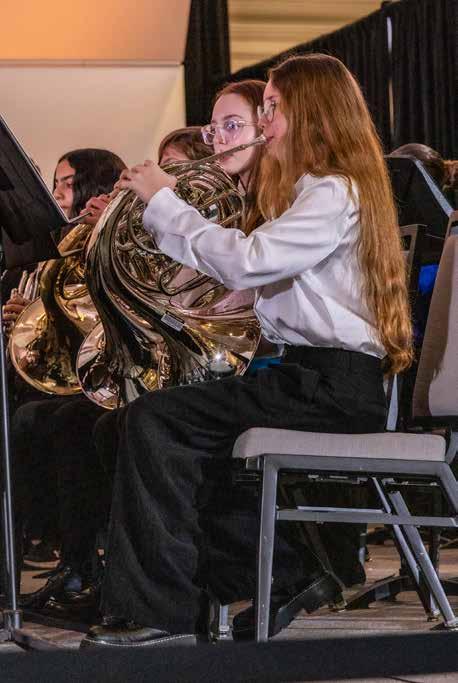
w A brief update on what the students have been working on, and a few general learning outcomes of what you want your students to get out of the clinic
I find it very helpful to know what the students have been working on recently. Are they still working on notes and rhythms? Do you have an upcoming pre-MPA concert they are preparing for? What are some things you’ve been working on that still need further development? A few sentences about where the students are and what you’d like them to gain can lead to significantly better outcomes.
Finally, music is added every year to the MPA list, and it is very possible that the clinician won’t know your repertoire. For that reason, it’s important to include a list of the repertoire you are performing, links to recordings when possible, and if you have the appropriate copyright permissions, copies of the scores. The more information you can provide in advance, the better.
continued on page 32
What to Do During the Clinic
This was always awkward for me! Do I sit in the back with a notepad while the clinician takes full control? Do I conduct while they give comments? Do we tag-team and take turns giving feedback? The answer to these questions depends on what your band needs, your style of teaching, and the clinician. Once you’ve worked with someone long enough, you get a sense for how they like to work, but if you are inviting someone new to work with your group, it might be worthwhile to ask them what they think would be the most effective structure for the clinic. Include this question in the email you send out in advance.
After the Clinic and Final Thoughts
If you enjoyed the clinic, let the clinician know. A thank you email is always appreciated. It also doesn’t hurt to book them for next year. When I was teaching
afterward. It was during those precious moments that I could ask direct questions about my classroom management, thoughts on repertoire, and life in general in the small corner of Michigan where we lived. It’s very easy to feel disconnected as a band director, and the guests I invited in helped me become a better teacher while connecting me with the musical community throughout the region. It can be scary to welcome a clinician to work with your students, but it’s invaluable to do so because it allows us and our students to grow into the best musicians we can be.
Marc Decker, DMA , is an associate professor of music at Florida Atlantic University where he serves as associate director of bands. He was previously a high school band director at South Haven High School in Michigan and is an active arranger, drill writer, guest con-
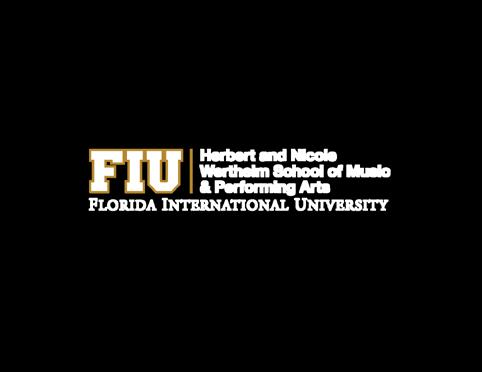


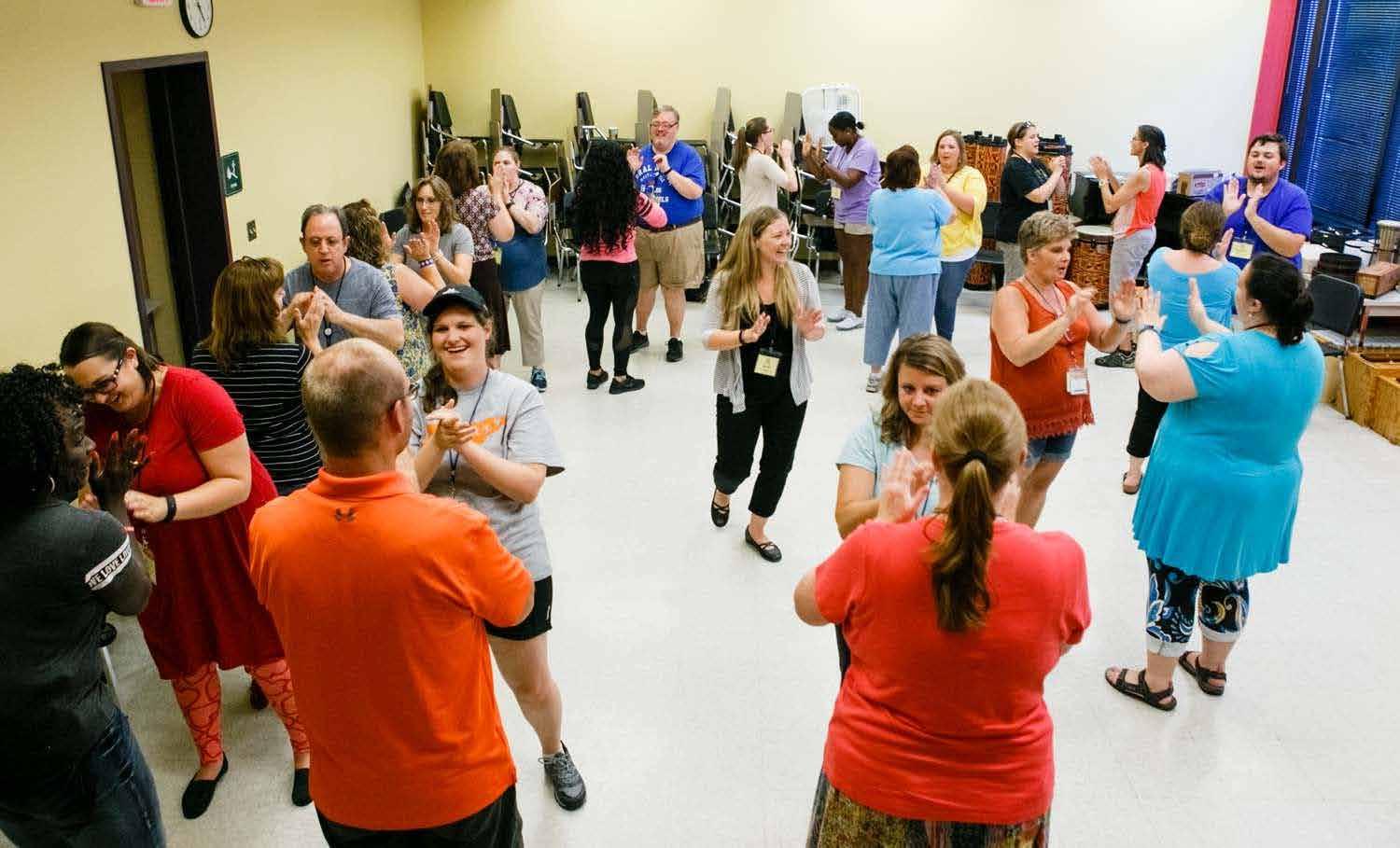


FLORIDA MUSIC EDUCATION ASSOCIATION
2024-2025 DONORS
Thank you to all of the donors who have shown their dedication to the improvement of music education in Florida by supporting our Mission through financial contributions.
Our donors support specific causes by donating to the FMEA funds of their choice:
FMEA Scholarship Fund
Music Education Advocacy
General Fund
June M. Hinckley Scholarship
Professional Development for Members
Mel & Sally Schiff Music Education Relief Fund
The following have graciously donated to FMEA from April 1, 2024, through April 7, 2025.
MAESTRO’S CIRCLE
$10,000 and up
ARTIST’S CIRCLE
$1,000 – $9,999
No current donors at this time. All County Music
Frank Howes
In Memory of Vashti Jordan
Howes
Clifford Madsen
SUSTAINERS
$100 – $999
Carlos Abril
In Honor of Dr. Alice-Ann Darrow
Artie Almeida
Lucinda Balistreri
In Honor of Sarasota County Music Educators
Trent Brown
In Honor of J. Mark Scott
Dale Choate
In Honor of R. Wayne Bailey
Alice-Ann Darrow
In Memory of Mr. & Mrs. O.B. Darrow
Virginia Dickert
In Memory of Debbie Liles & Lindsay Keller
William Fredrickson
Shelby Fullerton
In Memory of Dan Fullerton
Marsha Juday
Aaron Kass
Steve & Beth Kelly
Sheila King
Jason Locker
In Memory of June M. Hinckley
Joseph Luechauer
Deborah Mar
In Memory of Barbara Kingman
Russell Robinson
Fred Schiff
In Memory of Mom & Dad
Louis Schiff
Kelly Miller
Carolyn Minear
In Memory of Alice Fague
John Nista
In Memory of Stanley Dmitrenko
Mary Palmer
Douglas Phillips
In Memory of Dr. Bobby Adams
David Pletincks
In Honor of My Children
Clinton Randles
Jeanne Reynolds
In Honor of Pinellas County Performing Arts Teachers
Mary Catherine Salo
In Memory of Gary Rivenbark & Wes Rainer
Steven Salo
In Honor of Dr. Bill Prince & In Memory of John "Buck" Jamison
Kathleen Sanz
In Memory of June M. Hinckley
J. Mark Scott
In Honor of Jason Locker, Dr. André Thomas, Dr. Judy Bowers, & Dr. Judy Arthur
John Sinclair
D. Gregory Springer
Harry Spyker
In Honor of Fred & Marlene Miller
Jeannine Stemmer
In Memory of Barbara Kingman & Lauren Alonso
Leiland Theriot
In Memory of Clayton Krehbiel
Rebecca Traenkner
On Behalf of the Hillsborough County Elementary Music Educators Council
PATRONS
$25 – $99
Sandra Adorno
Meghan Alfaro
Maria Athanasulis
Sasha Aufschneider
In Memory of Michael Aufschneider
William Bauer
In Honor of My Colleagues, Present & Past
David Bayardelle
In Dedication to Dr. George Sparks
Mark Belfast
In Memory of Dr. Mark A. Belfast, Sr.
Kasia Bugaj
Greg Carswell
William Castillo
Jeff Cayer
Shelby Chipman
Zachary Chowning
Dayna Cole
In Memory of Linda Mann
Deborah Confredo
In Honor of ALL FMEA members who do the good work of giving the gift of music year -round!
Edward Doyle
Debbie Fahmie
Anne Fennell
FRIENDS
up to $24
Bryan Alspach
Manny Bermudez
Crystal Berner
Wendy Birket
Laurie Bitters
Matthew Chesner
Ernesta Chicklowski
On Behalf of Roosevelt Elementary
Musicians
Jennifer Corzine
Richard Uhler
Peter Waidelich
Howard Weinstein
In Memory of Barry Weinstein
Kenneth Williams
Anonymous (1)
In Memory of Claude Dobbins
Laurestine Fleming
Lisa Foltz
In Memory of Rev. Vernon Ronald Feener
Bradley Franks
In Memory of Gary W. Rivenbark
Anna Marie Friars
In Honor of Dr. Clifford Madsen
Dakeyan Graham
Rebecca Hammac
Amanda Hauta
Cynthia Heidel
Bernie Hendricks
Alexander Jimenez
Marsha Kindall-Smith
Christine Lapka
Aaron Lefkowitz
Craig Lilly
David Martinez-Cooley
Merleon Morgan
Amelita McGrath
Katie McGuire Menges
Jessica Moore
In Honor of Dr. Nancy Barlar
Mark Morette
Harry Pardee
In Honor of Harry & Anne Pardee & In Memory of Sally Eldridge
Edward Prasse
Marie Radloff
In Memory of Charles F. Ulrey
Rudolf Radocy
Sean Rees
Diana Rollo
Robin Ryon
Thomas Silliman
In Honor of Dr. Tom Silliman, Sr.
John Southall
Kelly Southall
Eddie Steadman
Mark Stevens
In Honor of Dr. Clifford K. Madsen
Phil Tempkins
In Memory of Sue McCray
Valerie Terry
David Verdoni
Matthew Weihmuller
Sondra Wenninger Collins
Lindsey Williams
Anonymous (7)
In Honor of Columbia County Music Teachers
Leon Dalgleish
Katie Doyle
Christopher Dunn
Patrick Dunnigan
Tina Gill
In Memory of Gary Rivenbark
Angela Hartvigsen
William Hazlett
Yangqian Hu
Ethan Hubbard
Jason Jerald
Kathleen Kerstetter
Marisol LaBoy
Lu Anne Leone
John Marshall
Matthew McCutchen
In Honor of Dr. John Carmichael
Anthony Moore
Emerson Oliver
Ashley Peek
Ian Schwindt
Gary Smith
Daniel Sullivan
Andrea Szarowicz
Lindsay Walters
Anonymous (12)
In Memory of Ernest O. Hebson

Mark A. Belfast, Jr., PhD Advisor
Forget Tacos, It’s Raining Lizards!
What do you know about green iguanas (Iguana iguana)? They are fascinating creatures! This summer, I spent some time down in South Florida, and they were everywhere! Iguanas are the squirrels of South Florida, and they have a few superpowers:
They’re fast, MUCH faster than most of us. Some iguanas can sprint at speeds over 20 miles per hour! When U.S. sprinter Noah Lyles (who trains right here in Florida) won the 100-meter event in the Paris Olympics, he was running at roughly 22.85 miles per hour. Our lizard friend might not have won that race, but it would have had a pretty good shot of making the Paris final!
Like squirrels, iguanas have sharp claws that enable them to climb trees with ease. They are arboreal, which means they spend most of their time up in the tree canopy.

They can get big too … really big! An adult iguana can reach six feet in length (from tip to tail) and weigh up to 20 pounds! Imagine that for a moment … you’re out in your yard and just happen to look up in a tree. What do you see? A six-foot, twentypound lizard staring back at you. No. Thanks.
When they’re not in trees freaking people out, or sunbathing in the parking lot of Wendy’s, they’re in the water. Yep! These suckers ALSO swim. They hang their stubby little legs by their sides and propel themselves through the water with their tail like a gator!

All of those abilities help the iguanas avoid predators and thrive in the warm South Florida climate … until there’s a cold snap! Then, none of those traits matter. You see, iguanas are not native to Florida. They are considered an invasive species. Back in Central and
South America, the true home of the iguana, the tropical climate keeps their body temperature nice and toasty. So, when it gets unusually cold in tropical South Florida, it rains lizards. The animals become extremely sluggish or immobilized, and they literally fall from the trees! Not to worry, though, iguanas have been known to fall from 50 feet without experiencing injury, and once they warm up, they are good to go again! Fascinating. Right?
There’s a lot we can learn from the green iguana. You see, despite having a great many gifts that enable them to thrive here in Florida, there are times when nothing
they can do for themselves is enough. They are forced to slow down, or stop, and wait. Then, when their environment is right, they carry on. Whether this is your first college semester or just your next one, remember the green iguana when things get tough. Consider your environment, and ensure you have a safe place where you can be still when things aren’t going as planned. That might mean changing your environment. At the very least, it means surrounding yourself with people willing to catch you when you fall. Then, after taking a beat, pick yourself up and carry on.
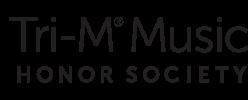

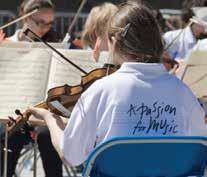
MULTICULTURAL NETWORK
Arnekua Jackson, PhD Chairperson
A New Year With the FMEA Multicultural Network: Recharged, Reconnected, Ready
s the 2025-26 school year begins, the FMEA Multicultural Network (MCN) returns recharged, reconnected, and ready to lead the way in making music education more inclusive, empowering, and culturally responsive. Whether you’re a

Theclassroom teacher, ensemble director, collegiate professor, student teacher, or a music education teacher seeking support, we want you to know this is your community and your presence matters.
This summer’s Florida Multicultural Network Music
FLORIDA COLLEGE MUSIC EDUCATORS ASSOCIATION
Kyle Prescott, DMA, President
Workshop, hosted at St. Thomas University in Miami Gardens, was a powerful reminder of what is possible when passionate educators come together. We shared space, stories, and strategies, leaving us inspired and equipped to

impact students through music that reflects who they are and where they come from. The energy in the room was undeniable, and we are carrying it with us into the school year.
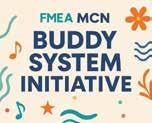
Florida College Music Education Association (FCMEA) is committed to serving music faculty members at colleges and universities within the state of Florida. Through collective action, the FCMEA addresses the shared challenges faced by its members. While college and university teachers hold memberships within each of the components of the Florida Music Education Association, the FCMEA stands out as the associated council specifically focused on this level of education and the distinctive challenges of college and university teaching.
In my 22nd year as a music professor at Florida Atlantic University, I embark on an energizing new challenge: following the untiring Dr. Sandra Adorna into the FCMEA presidency. Here are some insights into our organization.
The established purposes of the FCMEA are as follows:
w To promote teaching at the collegiate level in the state of Florida
w To encourage improvement and advancement in college and university music programs
w To encourage communication between the colleges and universities in the state of Florida
w To address common issues at the colleges and universities in the state of Florida
w To encourage and assist the professional growth of the membership
The FCMEA offers two grant opportunities annually for its members, with applications open in October:
w The Visiting Scholar Program provides up to $1,500 to invite an expert in music education to your campus for presentation and workshops.
w The Creative Explorations Grant provides up to $1,500 to support active FCMEA members engaged in research or creative activities that align with the mission of the association.
For further information, please visit our website, fcmea.org.
To keep that momentum going, we are proud to launch our MCN Buddy System Initiative this fall. This mentorship program pairs experienced educators with new teachers, collegiate students, and music education teachers seeking connection, encouragement, and guidance. Through intentional monthly engagement, resource sharing, and real conversations, this initiative is building bridges across generations of music educators. No one should navigate this profession alone, and now they do not have to. As the year unfolds, MCN remains dedicated to:
w Promoting inclusive and diverse music programming that honors student identity
w Supporting teachers working in Title I, rural, urban, and under-resourced communities
FLORIDA MUSIC SUPERVISION ASSOCIATION
John J. Dupuis President

Onw Building sustainable mentorship and networking opportunities
w Centering multicultural perspectives in our curriculum, conferences, and conversations
We are also proud to continue our Multicultural Network All-State Scholarships. Elementary through high school students selected for an all-state ensemble are eligible to apply. To be considered, the student’s teacher must be a paid dues member ($30) of the Multicultural Network (MCN). These scholarships are limited and aim to support participation for students who may face financial barriers. More information to come … Multicultural music education is not just a trend. It is a necessary shift in the way we teach, lead, and connect. It empowers students, challenges biases, and creates classrooms where all cultures are celebrated.
So, here’s to a new year with new possibilities. A year where we listen deeply, teach boldly, and grow together. On behalf of the FMEA Multicultural Network, welcome back. Let’s make this a year of impact and inspiration.
behalf of the Florida Music Supervision Association (FMSA), welcome to the 2025-26 school year! After 15 years as a high school band and orchestra director and eight years serving as music supervisor for Volusia County Schools, I am honored to further strengthen my advocacy for music education by assuming the role of president of the Florida Music Supervision Association. As we embark on a new musical and academic journey together, we extend our heartfelt gratitude for your continued dedication to inspiring, educating, and empowering Florida’s students through music. As supervisors and advocates of music education, we recognize the passion, creativity, and dedication you bring to your students each day. Your commitment continues to elevate the importance of music in our schools and communities.
This year, we are excited to build on the momentum of recent successes (like the Florida Seal of Fine Arts) while looking ahead to fresh opportunities for growth and innovation. Music educators across Florida are leading the way in designing exciting and engaging student-centered programs that reflect both musical excellence and program quality. Your influence goes far beyond the notes on a page; you are shaping communities rooted in collaboration, leadership, intentionality, and teamwork. Whether you are beginning your first year in the classroom or returning as a seasoned professional, we recognize the vital role you play in shaping the lives of young musicians.
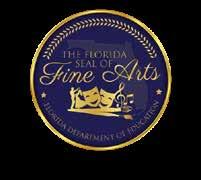
FMSA remains steadfast in our mission to support you as leaders in your schools and districts. Throughout the year, we will continue to provide guidance on curriculum development, assessment strategies, recruitment and retention, instructional support, and policy advocacy. We are also proud to collaborate with the Florida Music Education Association (FMEA), Florida School Music Association (FSMA), and all of our performing arts partners to align efforts that enhance student access and teacher success statewide.

As we look forward to the 2026 FMEA Professional Development Conference, themed The Power in Our Profession: Music Education for Collective Impact, we encourage you to explore the powerful connections between professional learning and classroom practice. The conference will once again serve as a hub for pedagogical workshops, performance excellence, and meaningful dialogue. We urge you to engage in sessions that not only refine your craft but inspire innovation in your program and community.


We know the school year will bring both challenges and triumphs, and FMSA is here to walk alongside you every step of the way. As always, we encourage open communication with your local music supervisor(s) and with our statewide network. Your insight and experience are vital to shaping the future of music education in Florida, and we are grateful for your partnership.
Thank you for all that you do to enrich the lives of Florida’s students through music. Here’s to a dynamic, purposeful, and joyful 2025-26 school year.
Greetings, my name is Jason Lane, a fourthyear music education scholar from Atlanta, and I’m honored to serve as the 2025-26 president of Florida NAfME Collegiate and as a drum major for the world-renowned Florida A & M University Marching “100.” As a student at Florida A & M University, my mission is to inspire, empower, and advocate for the next generation of music educators across the state and beyond.
In my role as Florida NAfME Collegiate president, I represent more than 500 collegiate members and lead initiatives focused on advocacy, professional development, and student engagement. I’ve had the opportunity to plan statewide conferences, support our Executive Board in expanding outreach efforts, and foster meaningful collaboration between music education students and professionals. Leadership is at the heart of everything I do. I proudly serve as parliamentarian of the Delta Iota Chapter FLORIDA
Jason Lane President

Meet Jason Lane: FAMU Drum Major and Florida NAfME Collegiate President
of Kappa Kappa Psi, where I’ve worked to increase efficiency, transparency, and communication within the organization. I also help students at FAMU recognize what NAfME is and how they can actively shape the profession through the many opportunities and resources it provides. As a past secretary and treasurer for our campus chapter and the school’s first NAfME state president, I’ve focused on connecting our students to the broader vision of music education and the critical role they play in its future.
This year, I’m incredibly proud to take on the role of drum major for the Marching “100”—a legacy I do not take lightly. Leading such an iconic ensemble has taught me the importance of discipline, unity, and setting the standard both on and off the field. My time as principal saxophone section leader and vice president of the band has prepared me to lead with purpose, humility, and pride.
Outside of the collegiate sphere, I serve as a mentor
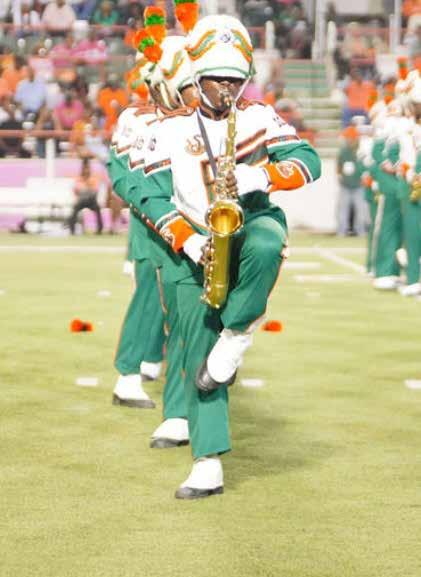
community I am present in, where I work with students in grades 6–12 on musicianship, etiquette, and showmanship. Seeing the impact music can have on young lives continues to fuel my passion for teaching.
I’m grateful for the
education community have provided me. I look forward to continuing to serve, learn, and grow as a future music educator—and to helping ensure that all students in Florida have access to meaningful, high-quality music education.


AWARDS COMMITTEE
Sondra A. W. Collins
Chairperson
The 2026 FMEA Award nominations period is now officially OPEN! Your FMEA Awards Program offers several awards in recognition of the efforts and accomplishments of those who have made outstanding contributions to music education. Your active involvement in the nomination process ensures that FMEA recognizes the most deserving individuals throughout our state. The deadline for all categories (except the Music Education Service and the Music Enrollment Awards) is a NEW deadline of September 1, 2025. Please check the FMEA website for details at FMEA.org/programs/ awards and nominate someone deserving, today!
I am continuing to share with you a little of the brilliance that our 2025 FMEA awardees have to offer, speaking their truth about music education and the passion that drives them. These words of inspiration I share with you to give you that confidence to be the light to your own students, as well as the drive to help shine a light on others in this current nomination period.
Here is your monthly dose of inspiration, through words of gratitude and conviction, from our 2025 FMEA College Music Educator of the Year, Dr. Sandra Sanchez Adorno, assistant professor of music education and area coordinator of the Music Education Department at Florida International University and immediate past president of the Florida College Music Education Association.
ADR. SANDRA SANCHEZ ADORNO 2025 FMEA College Music Educator of the Year
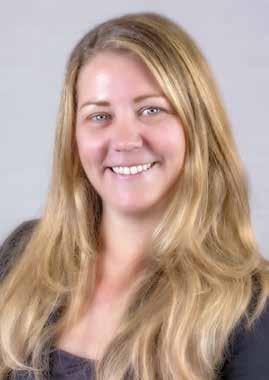
“As a Florida native and product of Pinellas County Schools, being recognized as Florida’s College Music Educator of the Year feels like an absolute dream. This award is especially humbling due to my nomination by Jessica Gronberg, on behalf of the Florida Elementary Music Educators Association. Since becoming a college professor, it has been a true mission of mine to support my fellow elementary music educators and their students through professional development and collaboration. Our reciprocal learning relationships have only made me a better educator and person. I would also like to thank my family and the many impactful mentors I’ve had throughout my music education journey. Most were in the room at the FMEA Awards Ceremony in January, which shows just how all-encompassing and necessary the Florida Music Education Association is to our great state and its music educators and students at all levels. Lastly, I’d like to thank the students and alumni at Florida International University. I feel so privileged to be able to witness their growth musically, professionally, and personally, and I am so grateful for our alumni who continue to mentor and support them. It is such an honor to be a part of the FIU family. Go, Panthers!
I believe that every student in Florida has the right to a meaningful music education : one that responds to a wide range of musical contexts, cultures, and interests; one that encourages musical growth, expression, and creativity; and one that connects students to each other and the world around them. Let us continue to advocate for our students, ensuring their access to music education, regardless of their age, background, or ability level. Let us embrace innovation in music education , exploring new technologies, incorporating diverse musical styles, and finding creative ways to engage all students. Let us continue to support each other as music educators, sharing best practices, offering mentorship, and creating a strong collaborative teaching community. Let us inspire the next generation of musicians and music educators, ensuring that the legacy of music education in Florida continues to thrive.
No one ever said it would be easy being a music educator, but I think most can agree that there are few professions as enjoyable and rewarding as teaching music .”
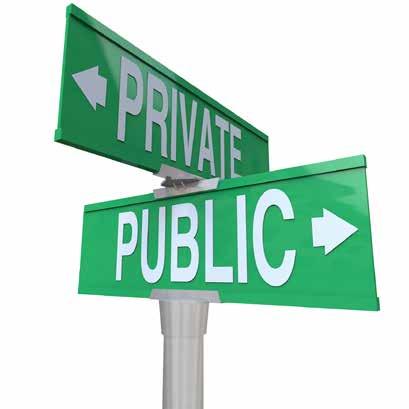
Christine Lapka, EdD Chairperson

Important Information About School Choice and Exceptional Education
TheIndividuals with Disabilities Education Act (IDEA) began in 1975 as the Education for All Handicapped Children Act (Public Law 94-142). Prior to the IDEA, nearly 1.8 million
children with disabilities were excluded from education. With the law, the U.S. has progressed to providing more than 8 million children with disabilities with special education and related services
Comparison of IDEA Rights: Public vs. Private (Voucher) Placements
Rights/Protections Under IDEA
Free Appropriate Public Education (FAPE)
Individualized Education Plan (IEP)
Educated in the Least Restrictive Environment (LRE)
Procedural safeguards under IDEA (due process hearings, mediation, stay-put, etc.)
Responsibility to comply with IDEA
ADA & Section 504 protections
Public School
✅ Yes. Guaranteed by IDEA.
Parentally Placed Private School (including vouchers)
Not guaranteed; private school does not have to provide FAPE.
✅ Yes. Must be developed and followed. Does not have to develop an IEP; must have a services plan.
✅ Yes. Required to include with non-disabled peers to maximum extent appropriate.
✅ Yes. Full procedural protections apply.
✅ Yes. Must comply fully.
✅ Yes. Must provide reasonable accommodations and avoid discrimination.
LRE requirements do not apply in private placements by parents.
Procedural safeguards under IDEA generally do not apply to private schools chosen by parents.
Generally, do not have to comply with IDEA.
⚠ Yes, if the private school accepts federal funds or is open to the public. Must comply with ADA/504 for access, not full IDEA rights.
in the 2022-23 school year (USDOE, n.d.).
IDEA protects students in public schools, but private schools are not bound by IDEA. It is important for parents to understand that choosing to send their children to private schools, even with a public voucher, may mean they will not receive the same services or education as students in public schools (USDOE, 2022). The chart on the previous page outlines some of the differences.
It is essential to understand that even though private schools are not required to follow IDEA, some may choose to follow similar safeguards. Parents who do their research might find private schools that offer equal or even better support for students with disabilities. This is often true of specialized schools for students with autism spectrum disorder or for those who are Deaf, hard of hearing, or have other sensory differences.
However, if you want to make sure that IDEA is in place in the private school, have the school
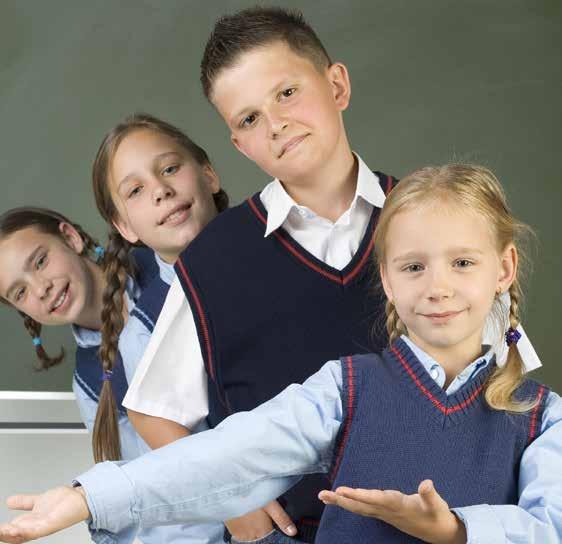
district determine that the specialized school is the Least Restrictive Environment.
For example, if the student is blind, the school district and the parents may decide that a special private school will be the best place for the student to learn. In that case, the public school pays the full cost for tuition and related services and the child has all of IDEA’s safeguards. In that case, even though the parents are involved, the private school is not considered parental placement. It acts as a substitute for the public school based on a child’s need (IDEA statute, 20 U.S.C. § 1412(a)(10)(B)).
With the popularity of vouchers, it is important for
parents to research the school and know the law so they can make informed decisions.
References
According to the U.S. Department of Education: “Statefunded School Voucher and Scholarship Programs— clarifying that children with disabilities who use State vouchers and scholarships to attend private schools are considered parentally-placed private school children. No parentally-placed private school child with a disability has an individual right to receive some or all of the special education and related services that the child would receive if enrolled in a public school” (34 C.F.R. § 300.137(a)). https://sites.ed.gov/ idea/files/QA_on_Private_ Schools_02-28-2022.pdf
Wrightslaw explains: “Children who attend public schools are entitled to a free appropriate education and an IEP, and they receive funding from the federal government. Private
schools do not receive this funding and are not required to provide a free appropriate education or an IEP. They are not required to provide special education services to children with disabilities. Private schools are bound by Section 504 and cannot discriminate against a child with a disability for reasons related to the disability and might be responsible for providing modifications, accommodations, and access to educational opportunities (such as a ramp for a child in a wheelchair).” https://www. wrightslaw.com/blog/idea2004-and-private-schools/
U.S. Department of Education (USDOE). (n.d.). A history of the Individuals with Disabilities Education Act. Retrieved July 10, 2025, from https://sites.ed.gov/ idea/IDEA-History
U.S. Department of Education (USDOE). (2022). U.S. Department of Education Q & A on private schools and IDEA. Retrieved July 10, 2025, from https://sites.ed.gov/ idea/files/QA_on_Private_ Schools_02-28-2022.pdf
STUDENT ENGAGEMENT COMMITTEE
Michael Antmann, EdD Chairperson
Experiences That Inspire and Lead
Did you know that most Florida music educators were not a part of an all-state ensemble when they were high school? In fact, according to a recent survey, twothirds of our music teachers were not in an all-state group, yet most of the students at our state conference are there to participate in an all-state ensemble. Now more than ever, it is important to identify and provide opportunities for all our students who might be interested in pursuing music education as a career. How can we provide all our students incredible, life-changing opportunities?
Did you know that the Florida Music Education Association’s Student
Engagement Committee facilitates several opportunities for our students?
The Student Conference Experience expands access to the annual conference to students from throughout the state. Participating students will interact with amazing clinicians and educators, college representatives, and incredible performing groups. These students will have memorable experiences they can take back and share with their high school music programs. The program will take place on Thursday and Friday of the 2026 FMEA Professional Development Conference. Students will participate in workshops, observe rehearsals, attend College Night, and engage
in networking and social activities with their peers.
The Tri-M Experience provides students with experiences that will build their leadership and advocacy skills, as well as expose them to the experiences available at the annual conference. Participating students will interact with amazing clinicians and educators, college representatives, and incredible performing groups. These students will have memorable experiences they can take back and share with their high school music programs. The Tri-M and Student Conference Experiences run concurrently with some overlap; schools can choose to participate in

one of these experiences. The Student Leadership Workshop takes place on the Wednesday of the FMEA conference. This is open to all Florida high school music students. Both the Tri-M and Student Conference Experience students can also participate in the Student Leadership Workshop. Participants have the opportunity to learn from world-class leadership experts.
Please visit the FMEA website for details about these events, as well as other opportunities. If you have any questions, please email Michael Antmann, committee chairperson, at michaelantmann@mac. com



PROFESSIONAL LEARNING COMMITTEE
Ajori Spencer Chairperson
In Pursuit of Joy PART 1
“Maybe this is just what happens …”
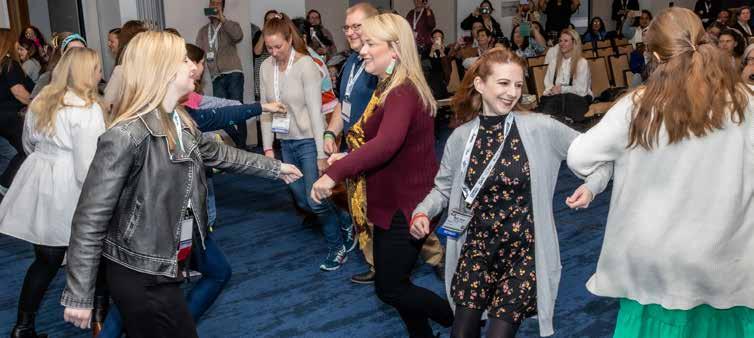
Maybethis is just what happens when you grow up. You feel less joy.” This line from Pixar’s hit Inside Out 2 left me, and many others, in an existential daze. The joyful moments of creation yield some of my fondest classroom memories, and yet it is easy to lose sight of joy in an ever-changing, post-pandemic world. The pandemic forced many of us to operate in survival mode, focusing on logistics and managing uncertainty. There was little room left for joy and exploration. As routines have slowly returned to normal, we must actively seek joy, not as a luxury, but as a necessity
for our mental and emotional well-being. When educators rekindle their passion and joy, students feel that energy and respond in kind. Even small, intentional moments of joy, whether in a successful rehearsal or shared laughter in the classroom, can create meaningful experiences. Striving for joy does not mean ignoring challenges; instead, it allows us to navigate them with hope and resilience, fostering a classroom culture where both joy and struggle coexist. How do we get there?
Self-determination theory identifies three fundamental human needs: autonomy, competence,
and relatedness. Autonomy involves experiencing a sense of control over one’s life or environment while competence refers to the perception of effectiveness in interacting with one’s environment. Relatedness pertains to the formation of meaningful and supportive relationships. We must address all three of these basic needs when having any discussion related to the creation of joy. Nurturing these needs is how we flourish.
Joy has, in many ways, been a guiding thread for the Professional Learning Committee in recent years.
From the sessions we’ve curated for the FMEA Professional Learning Conference to the podcast episodes we’ve shared ( FMEA.org/programs/ podcast), we’ve intentionally highlighted the joy that music education brings. Over the course of this year, the Professional Learning Committee will assist you in YOUR pursuit, providing practical advice to make joy a reality in your professional life. I am grateful for the opportunity to lead this important work, and I can’t wait to see what we’ll accomplish together. Let’s make this year amazing.
Jeff Cayer, EdD President

Another Summer Comes to a Close –Reflections, Celebrations, and a Look Ahead
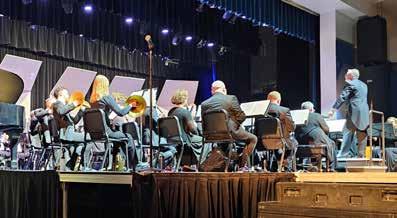

close and the school year kicks off once again, I find myself reflecting on the growth, joy, and purpose this past season has brought. My time at North Cayerolina—my beloved summer getaway— was particularly special this year. A huge construction project has been completed, and I am thrilled with the results. It’s been a labor of love and a long-term project
for me, something I’ve been investing in not just for today, but for my future.
No, I’m not retiring anytime soon—but I am a planner. I believe in preparing ahead so when that day does come, I can transition with peace of mind and a sense of fulfillment. Whether it’s setting aside time for selfcare, building financial security, or staying connected to a sense of purpose, these small decisions today lay
What About You? Let’s Talk Long-Term Plans
So let me ask you—what’s your long-term plan? Have you started thinking about your own version of a “North Cayerolina”? Have you taken steps to build your nest egg? Are you on a career path that brings you not just satisfaction today, but stability tomorrow?
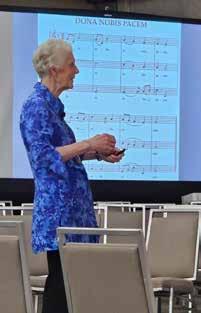
Here’s the great news: You’re not alone in figuring it out. We have access to some fantastic career planning resources, financial advisors, and mentors who can help you chart a course toward a future that’s not just secure, but rewarding. Whether you’re in your second year of teaching or your 20th, it’s never too early—or too late—to start planning ahead. Let us know how we can help.
Summer Professional Development Conference –What a Hit!
This year’s Summer Professional Development Conference was an overwhelming success! If you were there, you already know what I mean. If you missed it, let me just say—you missed something truly special.
Dr. Paula Crider (yes, the PC) delivered sessions that were both deeply inspirational and immensely practical. She reminded us not only of the “why” behind what we do, but gave us tools and ideas we could implement immediately in our programs. The mix of learning, playing, and meaningful connection was just what we needed to reenergize for the school year.
The conference is more than just a place to earn PD credit— it’s a place to grow, be heard, and feel part of something bigger than ourselves. Mark your calendars now for next year’s event:

Summer Conference 2026 – July 8–9
You won’t want to miss it!
Jazz Is Alive and Well – Summer Jazz Institute & All State News
The Summer Jazz Institute continues to build momentum, and we couldn’t be more thrilled with the growth in participation and enthusiasm. Jazz educators, clinicians, and students came together to share, create, and collaborate. Whether you’re a seasoned jazz educator or just starting to dip your toe into the swing of things, this event is a fantastic opportunity to sharpen your skills and share your passion.

Jazz Institute 2026 – July 9–10, immediately following the FBA Summer Conference
And speaking of jazz—major congratulations are in order:
The 2024 Florida All State Middle School Jazz Band has officially won the Downbeat Award for Large Honors Ensemble! That’s right—they won it all! Not an honorable mention, not a finalist … they took home the top honor. Hats off to Bobby Keating, director, and every one of those talented young musicians. Their performance was a masterclass in musicality, unity, and expression. If you were lucky enough to be in the audience that day, you know exactly what I’m talking about—it was unforgettable.
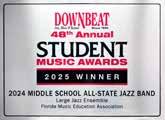
Support Is Always Available –Lean on the Mentoring Committee
Navigating the school year can be overwhelming at times, especially with everything we juggle as educators. That’s why the Mentoring Committee is here—to support you, encourage you, and help you grow. Whether you’re in your first year or your 15th, a fresh perspective and experienced feedback can go a long way.
Have a rehearsal coming up? Send in a recording for the “Extra Ears” program!
��Amber Hansen will get your concert band recordings into the hands of some phenomenal musicians who can provide expert feedback.
��Rick Fowler offers the same for jazz band rehearsals— constructive, professional advice that can transform your next performance.
Don’t wait until later in the year. Submitting a recording now gives you time to make adjustments, improve, and feel confident in your preparations.
Back to the Classroom – Let’s Make It Count
Leaving the peace of my summer retreat is always a little bittersweet—but I come back to the classroom feeling refreshed, motivated, and ready to make a difference. And let’s not forget the truth at the heart of what we do:
You make a difference.
For some students, you are the reason they look forward to coming to school.
For many, you’re the reason they succeed in their other classes.
For more than a few, you’re the adult in their life who listens, encourages, and believes in them—when no one else might.
The work we do matters. Every rehearsal, every lesson, every concert—it all adds up. The influence we have extends far beyond the stage or classroom. You are shaping lives. You are building futures. You are making this world a better place.
So as we begin another year, let’s keep pushing forward with passion and purpose. Let’s keep showing up—not just for our students, but for ourselves and for each other.
We’re here to support you every step of the way.
Let us know how we can help.
�� GO, BAND!
Jeannine Stemmer President

Growing Fruit Where Purpose Lives
Thisspring, I decided to grow a tomato plant. I placed it near a large, sunlit window inside my home— a spot where other plants had flourished in the past. Confident that the bright and healthy. It stretched upward with such strength that it eventually touched the ceiling. There were no signs of disease or pests. It was, by all appearances, thriving. But there was one problem: not a single tomato.

I was confused. How could something so strong, so beautiful, and seemingly perfect, bear no fruit? Then it dawned on me—it didn’t want to bear fruit indoors. Despite the ideal lighting and controlled environment, it was not in the place it needed to be to fulfill its purpose. I hesitated to move it outside. I knew the risks: unpredictable weather, pests, and the constant care it would require. But eventually, I gave in and took the plant outdoors.
Sure enough, within the first week, the leaves wilted under the sun, bugs appeared, and it took much more effort to maintain. I had to water it more often, protect it from pests, and pay closer attention to its needs. But then, something beautiful happened—fruit began to
That tomato plant taught me a powerful lesson. It grew tall and strong in the comfort
of where I wanted it, but it would only bear fruit where it was meant to be.
Fulfilling our purpose isn’t always comfortable or clean—it can be exhausting, messy, and frustrating. But purpose rarely grows in perfect conditions. It often shows up in the thick of the storm, where things stretch us the most.
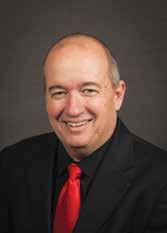
to David Pletincks for his extraordinary leadership over the past two years. He modeled wisdom, balance, and drive. David showed me that there are enough hours in the day to conquer the world—if you use your time wisely. Congratulations, David, on a remarkable presidency.
As for me, I was preparing to step away. After 10 years on the board, I was ready to walk into the sunset. But then came a call—to serve the Florida Vocal Association one more time as interim president during a season of
transition. I wrestled with the decision. Why say yes?
Here’s why:
1. FVA has been my community. I wouldn’t have made it through 26 years in the classroom without it—and I’m going back for more. FVA has sustained me, challenged me, and reminded me why this work matters.
2. I love FVA, and I have a deep desire to invest in the innovation this organization needs.
3. I am not alone. We have the most incredible team. I am never more than a text or call away from people who are ready to help, encourage, and step in.
4. I love people. Truly. I thrive on connection and find so much joy in community, collaboration, and shared purpose. And finally,
5. Michael Dye asked me to. Honestly, I would’ve said yes for that reason alone.

FLORIDA ELEMENTARY MUSIC EDUCATORS ASSOCIATION
Meghan Alfaro President
If you’ve never had the privilege of working with Michael Dye, you’re missing out. He is the ultimate professional. Thorough, thoughtful, and tireless— there were times I wondered if he ever slept. But what makes him unforgettable is not just his dedication, but his heart. He is kind, gentle, and humble. He leads with a servant’s spirit. He loves FVA—but even more, he loves its people. I will honor his legacy. He is worth that and more.
So yes, I’ll step outside again—into the unpredictable weather, with all the bugs and risk of withering leaves— because people don’t need a picture-perfect plant. They need its fruit.
And that, I am willing to give.
As you embark on this new school year, pouring into the lives of your students, keep these thoughts close to heart: Lean into your FVA community—they will hydrate your soul when you’re feeling dry. Remember why you began this journey: to fulfill a purpose greater than yourself. Surround yourself with fruit-bearing friends who nourish and encourage you, so that you, in turn, can pour into those who need you most.


Creating Musical Footprints: Guiding Students Toward a Bright Future
Hello,
elementary colleagues! My name is Meghan Alfaro, and I am thrilled to begin my tenure as your FEMEA president. I have 20 years of elementary music experience, most recently as performing arts instructional staff developer for Pinellas County Schools. I want to thank Ashley Peek for her service and for being a wonderful mentor to me as I prepared to take on the role of president.
FEMEA has been a part of my music educator journey from the beginning of my career. I have found the conference sessions vital to my classroom success. I have had students participate in All-State Elementary Chorus and FEMEA regionals, and these student opportunities have been life-changing for them! The work of FEMEA really does change lives.
As president, I look forward to expanding FEMEA’s footprint in the state and providing supports and engagement opportunities to even more elementary teachers. Elementary teachers are an untapped resource, and our secondary colleagues need us! We are the musical foundation that sets up our students for success. Many students begin to selfidentify as musicians in elementary school. Whether through our new student engagement and member engagement chair initiatives, professional learning opportunities, or all-state and regional ensembles, FEMEA will strive to promote elementary music education across the state of Florida because ALL students deserve access to a high-quality elementary music experience!
I look forward to serving alongside our amazing board. We welcome your input as to how FEMEA can continue to support you as elementary music educators. As you begin your school year, remember that YOU are the best part of someone’s day or week. Thank you for all you do to educate and bring JOY to our youngest musicians. Have a wonderful start to your school year!
You can reach me at meghan@femea.flmusiced.org.
Andrea Szarowicz President
Together in Harmony: Launching the 2025-26 Year With Purpose and Passion
Welcomeback, colleagues and friends of music education—where did the summer go? I hope your summer was restful, relaxing, and rejuvenating, filled with time for reflection, fun times with friends, and meaningful moments with family. As we step into the 2025-26 school year, I am honored to begin my first of two years serving as your FOA president. Working alongside you, getting to know you, and helping move our organization forward are at the heart of my mission this year.
I would like to begin by expressing my sincere gratitude to our past presidents Matt Davis and Laurie Bitters. Both individuals demonstrate outstanding leadership, dedication, and willingness to go above and beyond, and have set a remarkable example for all of us. I also want to warmly welcome our president-elect, Lauren Pardee, and extend my heartfelt thanks to our executive director, Cheri Sleeper, who has done an incredible job in her first full year in this role. Additionally, I want to recognize our financial director, Tom Silliman. His guidance, fiscal
knowledge, and attention to detail have been invaluable to our organization, and it has truly been a pleasure working alongside him.
None of what we accomplish would be possible without the dedication of our FOA board members. Your service, commitment, and willingness to support both the association and your district members keep our organization alive, vibrant, and thriving. Thank you for all that you do to ensure the continued success of our programs and the students we serve.
As all of you diligently prepare for the school year, please keep in mind several important registration deadlines.
w Membership dues for FMEA, NAFME, and FOA must be paid by September 15, 2025. I encourage you to check with your district chairperson to confirm deadlines for postmark submissions versus online submissions.
w All-state registration and eligibility details are available on both the FMEA website ( FMEA.org) and the FOA website ( myfoa.org). Our
all-state recording window will take place September 15-21, 2025, and your district chairperson can provide you with specific recording dates for your area.
w In addition to individual membership dues, don’t forget that your school’s FSMA (Florida School Music Association) dues must also be paid to ensure your students are eligible to participate in music performance assessments (MPAs) during the year. The early payment discount deadline for FSMA is September 15, 2025. You can check your school’s payment status by visiting the FSMA website ( floridaschoolmusic. org).
Looking ahead, I invite you to join us for the 2025 FOA/FLASTA Fall

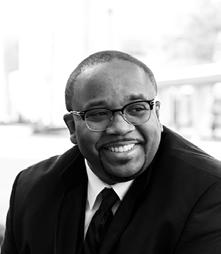
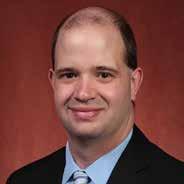
Professional Development Conference, Ignite Your Inner Champion, which will be held at the Hilton Orlando Hotel October 16-17, 2025. This year, we are excited to welcome two outstanding keynote speakers: Professor POPE

FLORIDA ORCHESTRA ASSOCIATION
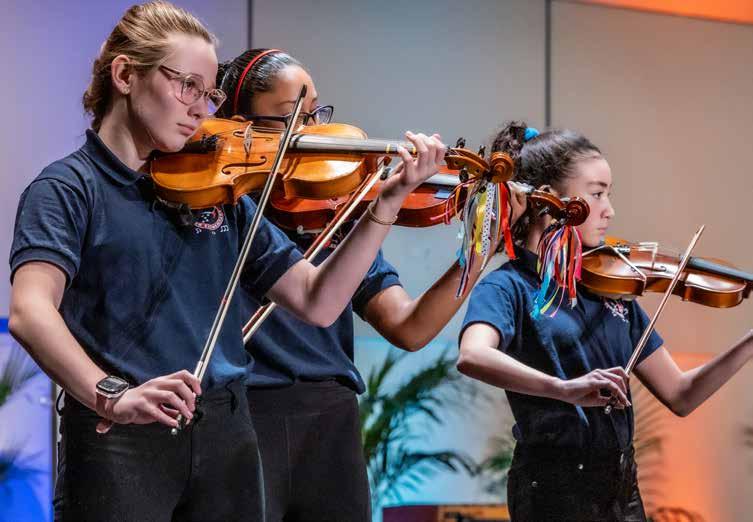
Creston Herron, director of orchestras at the University of Kansas, and Dr. David Pope, professor of music education at Baldwin Wallace University Conservatory of Performing Arts. These two individuals bring tremendous expertise and inspiration to the world of string education, and we are fortunate to have them share their knowledge with us. In addition to our keynote speakers, we will feature several incredible educators from across our great state, offering practical and inspiring sessions to help reenergize what we do best—teach. This conference is always a fabulous time to learn, grow, network with colleagues, and refresh us for the second quarter. I
encourage you to register now on the FOA website.
If you’re looking for another reason to attend the Fall Conference and get more involved, consider participating in the allstate adjudication process on Saturday, October 18, 2025, immediately following the conference. Listening to student recordings provides valuable insight into the level of preparation and dedication that goes into these auditions, and your involvement makes a real difference. If you are interested in helping with this important work, please reach out to your district chairperson.
As we kick off a new school year, I encourage
you to stay connected and involved by attending your district meetings, which will be starting soon. If you’re new to the profession or new to the state, you can find your district chairperson’s contact information on the FOA website ( myfoa.org).
To all our new educators: welcome! I urge you to reach out to your colleagues for guidance and support. Every one of us has experienced the challenges of a first year, and your peers are eager to share their knowledge and encouragement.
Don’t forget to block off your calendar for FMEA 2026, which will be held in Tampa, Florida, January 14-17, 2026. This year’s theme is The Power In Our Profession:
Music Education for Collective Impact. This conference will have many great speakers from all over the country and Florida.
Thank you for choosing to be part of the greatest and most impactful profession in the world. Whether you are a teacher, parent, student, or supporter of the arts, your contributions matter deeply and help shape the future of music education in our state. If you need anything throughout the year, please don’t hesitate to reach out to any member of the FOA Board. We are here to serve and support you.
Wishing you a joyful, successful, and music-filled school year!
Research Puzzles
FOR MUSIC TEACHERS
This on-going column seeks to stimulate awareness of research issues for FMEA teachers and researchers.
FMEA RESEARCH COMMITTEE
D. Gregory Springer, PhD, Chairperson Florida State University
Teaching Elementary Students With Autism Spectrum Disorder


Inmy experience working with preservice and inservice teachers, one of the most common concerns I hear is related to teaching students with disabil ities. Preservice teachers do not typically receive much preparation for teaching students with dis abilit ies in their undergraduate programs (Allan, 2025; Grimsby, 2020; VanWeelden & Whipple, 2014). Furthermore, professional development conferences for music teachers may not offer much content in this area either (VanWeelden & Meehan, 2016). For these reasons, many teachers lack the confidence to teach students with disabilities and need more knowledge and pedagogical skills in this important area.
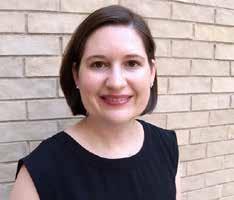
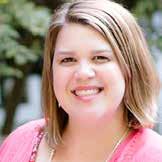
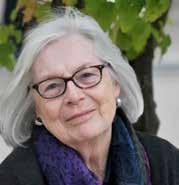
Drs. Ellary Draper, Laura Brown, and Judith Jellison recently published an article in Update: Applications of Research in Music Education focused on elementary music teachers’ experiences teaching students with autism spectrum disorder (ASD; Draper et al., 2025). The purpose of their study was “to identify elements for creating a culture of inclusion and implementing the inclusion of students with ASD” (p. 42). They used a descriptive qualitative design to explore two elementary music teachers’ experiences teaching students with ASD in inclusive music classes. Like other types of qualitative research, descriptive qualitative designs include an analysis of textual data to understand experiences and complex phenomena. In this study, the authors interviewed two elementary music teachers with
14 and 25 years of teaching experience, respectively. They also observed one of the teachers on four separate visits to their classroom. By analyzing the interview transcripts, observation notes, and other data sources, the researchers derived four common themes:
w School contexts, policies, and procedures. Both teachers experienced challenges due to school policies and procedures that needed improvement. For example, there were certain barriers to attendance at individual education plan (IEP) meetings because they often conflicted with their teaching schedule. Additionally, they both benefited from paraprofessional support, but they often had to submit requests to receive this support.
w Attitudes and interactions. Both teachers demonstrated positivity and optimism. Also, these teachers developed a culture in their classrooms where neurotypical students would serve as helpers for their peers with ASD and include
BROWN
Email your questions and feedback to dgspringer@fsu.edu with a subject heading Research Puzzles.

them in their learning activities. These attitudes and interactions were part of the success these teachers experienced.
w Music curriculum goals and instruction. Teachers expressed a primary goal of music learning for their students with ASD and made efforts to include them in all music programs. To that end, both teachers used flexible instructional approaches to adapt lesson plans for their students with ASD. These teachers also collaborated extensively with other teachers and paraprofessionals in their building to ensure success for their students.
w Preparation and training. Both teachers admitted that they had a lack of coursework and hands-on experiences (e.g., fieldwork, practica, student teaching experiences) related to teaching students with disabilities in their undergraduate program.
Grimsby (2020) explained that “teaching is a personal art, and students are a delicate canvas” (p. 87). Findings from Draper et al.’s (2025) study help to clarify some of the elements necessary for creating a positive culture of inclusion for students with ASD. All teachers should be aware of these common elements and reflect on the extent to which they are present in their own pedagogical practice. I encourage you to read the complete article. Members of NAfME can access articles in Update: Applications for Research in Music Education for free as part of their membership. Be sure to sign up for email alerts as well so you can be informed when new articles are published online.
References
Allan, A. (2025). Three inclusion barriers: An examination of elementary music teachers’ preparation to teach learners with exceptionalities. Journal of Music Teacher Education. Advance online publication. https://doi.org/10.1177/10570837241307249
Draper, E. A., Brown, L. S., & Jellison, J. A. (2025). Identifying elements of inclusion: Interviews with elementary music teachers about their students with Autism Spectrum Disorder. Update: Applications of Research in Music Education, 43(2), 41–52. https://doi. org/10.1177/87551233241237498
Grimsby, R. (2020). “Anything is better than nothing!” Inservice teacher preparation for teaching students with disabilities. Journal of Music Teacher Education, 29(3), 77–90. https://doi. org/10.1177/1057083719893116
VanWeelden, K., & Meehan, L. (2016). Teaching children with disabilities: Preparation through state music educators association conferences. Update: Applications of Research in Music Education, 35(1), 5–12. https://doi.org/10.1177/8755123315582069
VanWeelden, K., & Whipple, J. (2014). Music educators’ perceptions of preparation and supports available for inclusion. Journal of Music Teacher Education, 23(2), 33–51. https://doi. org/10.1177/1057083713484585
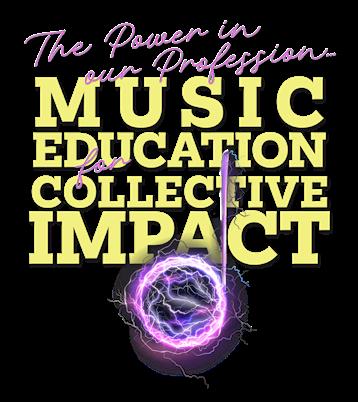


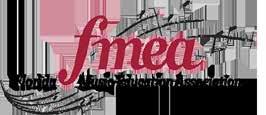

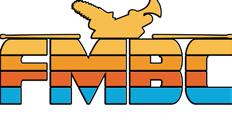
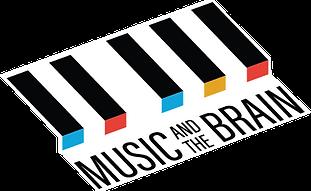
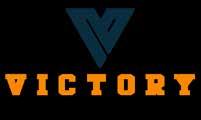
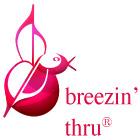


Partners as of April 7, 2025.
*Please visit FMEA.org/partners for partnership details or call 850-878-6844.


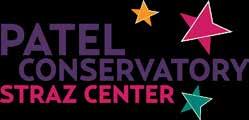
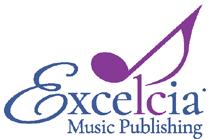


Executive Director’s
NOTES
The mission of The Florida Music Education Association is to promote quality, comprehensive music education in all Florida schools.

Opportunities Abound in the New Year
Welcome back for the 2025-26 school year! We hope you had an opportunity to learn, refresh, and relax over the summer. FMEA looks forward to engaging with each member and encouraging you to be involved in your association, including advocacy and the legislative process, to provide for strong music programs in our state.
Professional Learning Opportunities for Members
The 2026 FMEA Professional Development and All-State Concerts, The Power in Our Profession, Music Education for Collective Impact, is scheduled for January 14-17, 2026, in Tampa. Registration begins on September 12, 2025. We look forward to coming together in Tampa.
The Professional Learning Committee, chaired by Ajori Spencer, has been developing professional learning opportunities through podcasts and webinars. Watch for the announcements to come to your email and on the FMEA website. To view the current and past podcasts, go to the FMEA website, FMEA.org/programs/podcast/
Legislative Session/Government Relations
The FMEA Advocacy Committee, under co-chairpersons Jeanne Reynolds and Angela Hartvigsen, is reviewing the new laws impacting education. We will be providing an updated report on the FMEA website. The 2026 Legislative Session will begin on January 13, 2026, and end on March 13, 2026. Please look for communication from FMEA to assist us in reviewing proposed bills. If you have any questions about the bills as they progress, please call Dr. Kathleen Sanz at the FMEA office.
Florida Seal of Fine Arts Program
During the 2024 Legislative Session, the Florida Seal of Fine Arts passed unanimously in both the House and the Senate. During the 2024-25 school year, school districts worked on implementing the Seal for graduating seniors. The Florida Art Education Association (FAEA)
will collect and review the data to determine how the implementation plan is working by determining the number of students who received the Seal in each school district. The next steps will involve working with FAEA and the Florida School Music Association (FSMA) to develop legislative and advocacy plans, based on the data results. The ultimate goal will be for the students who receive the Seal to count in the school grade through acceleration points.
Student Opportunities
w TriM: Consider starting a TriM chapter for your middle and high school students. TriM is the only National Music Society for student musicians. Through performance and community service they will develop confidence, creativity, critical thinking, compassion, and leadership skills. For more information, visit the NAfME.org website.
w NAfME Collegiate: The Florida NAfME Collegiate members, music supervisors, and college professors are planning their annual Fall Conference to be held November 8-9, 2025, in Tallahassee. Colleges and universities, please encourage your students to participate in this event.
Florida School Music Association
The Florida School Music Association (FSMA) hosted a Leadership Symposium, Unlocking the Potential: Empowering Music Educators through Leadership, for music educators to assist in developing leadership for our components FBA, FOA, and FVA. FSMA works with secondary component organizations to provide oversight for interscholastic music activities.
FMEA is looking forward to a productive 2025-26 school year! Keep in tune and involved with your state professional association. If you have any questions, please call the FMEA office.
FMEA Executive Director
Kathleen D. Sanz, PhD
Kathleen D. Sanz, PhD
FLORIDA MUSIC EDUCATION ASSOCIATION
Officers and Directors
EXECUTIVE BOARD
President Harry “Skip” Pardee, EdD
Collier County Public Schools
5775 Osceola Trail; Naples, FL 34109-0919 (239) 377-0087; pardeh@collierschools.com
Past President Jason P. Locker
Orange County Public Schools
445 W. Amelia St.; Orlando, FL 32801 (407) 317-3200; jasonlocker@fmea.org
President-Elect
Bernard “Bernie” Hendricks, Jr.
Ocoee High School
1925 Ocoee Crown Point Pkwy.; Orlando, FL 34761 (407) 905-3009; bernard.hendricks@ocps.net
FBA President Jeff Cayer, EdD
Marshall Middle Magnet School
18 S. Maryland Ave.; Plant City, FL 33563-6008 (813) 757-9360; president@fba.flmusiced.org
FCMEA President Kyle Prescott, DMA
Florida Atlantic University
777 Glades Rd.; Boca Raton, FL 33431-6424 (561) 297-3826; kpresco2@fau.edu
FEMEA President Meghan Alfaro
Pinellas District Office
301 4th St. SW; Largo, FL 33770-3536 (727) 588-6055; meghan@femea.flmusiced.org
Florida NAfME Collegiate President Jason Lane
Florida A&M University jason1.lane@famu.edu
FMSA President John J. Dupuis
Volusia County Schools
200 N. Clara Ave.; DeLand, FL 32720-4207 (813) 787-6790; jjdupuis@volusia.k12.fl.us
FOA President Andrea Szarowicz
Steinbrenner High School
5575 W. Lutz Lake Fern Rd.; Lutz, FL 33558-9234 (813) 792-5131; aszarowicz@myfoa.org
FVA President Jeannine Stemmer
Florida Christian School
4200 SW 89th Ave.; Miami, FL 33165 (305) 226-8152; jeannine@fva.net
Member-at-Large
Steven N. Kelly, PhD
Florida State University
School of Music, KMU 330; Tallahassee, FL 32306 (850) 644-4069; skelly@admin.fsu.edu
EX-OFFICIO MEMBERS
Historian/Parliamentarian & Executive Director Kathleen D. Sanz, PhD Hinckley Center for Fine Arts Education
402 Office Plaza Dr.; Tallahassee, FL 32301-2757 (850) 878-6844; Fax: (850) 942-1793; kdsanz@fmea.org
Editor-in-Chief Kelly Miller, DMA
University of Central Florida; 12488 Centaurus Blvd.; Orlando, FL 32816-8009; (407) 823-4545; kelly.miller@ucf.edu
Conference Planning Committee Chairperson John K. Southall, PhD Indian River State College; 3209 Virginia Ave.; Fort Pierce, FL 34981 (772) 418-9133; johnsouthall@me.com
FSMA President Benny L. Bolden, Jr., EdD laruemusic99@gmail.com
Hall of Fame Chairperson...................................................... Mary Palmer, EdD (407) 252-5172; mpalmerassoc@aol.com
Florida NAfME Collegiate Advisor Mark A. Belfast, Jr., PhD (850) 644-3424; mbelfast@fsu.edu
DOE Arts Education Consultant Erin O’Connor
Florida DOE, Bureau of Standards & Instructional Support 325 W. Gaines St.; Tallahassee, FL 32399-0400 (850) 245-0762; erin.o’connor@fldoe.org
FMEA COMMITTEES & COUNCILS
COUNCILS
FLORIDA COLLEGE MUSIC EDUCATORS ASSOCIATION
President Kyle Prescott, DMA Florida Atlantic University; 777 Glades Rd.; Boca Raton, FL 33431-6424 (561) 297-3826; kpresco2@fau.edu
FLORIDA NAFME COLLEGIATE
President.......................................................................................... Jason Lane Florida A&M University; jason1.lane@famu.edu
FLORIDA MUSIC SUPERVISION ASSOCIATION
President.................................................................................... John J. Dupuis Volusia County Schools; 200 N. Clara Ave.; DeLand, FL 32720-4207 (813) 787-6790; jjdupuis@volusia.k12.fl.us
MULTICULTURAL NETWORK
Chairperson................................................................... Arnekua Jackson, PhD St. Thomas University; 16401 NW 37th Ave.; Miami Gardens, FL 33054 arnekuajackson@gmail.com
COMMITTEES
Advocacy Jeanne W. Reynolds, Co-Chairperson (727) 744-7252; jeannewrey@gmail.com
Advocacy Angela Hartvigsen, Co-Chairperson School Board of Sarasota County; 1960 Landings Blvd.; Sarasota, FL 34231 (941) 927-9000; angela.hartvigsen@sarasotacountyschools.net
All-State Eligibility ...................................................
Harry “Skip” Pardee, EdD Collier County Public Schools; 5775 Osceola Trail; Naples, FL 34109-0919 (239) 377-0087; pardeh@collierschools.com
Awards
Sondra A. W. Collins sondra.collins@marion.k12.fl.us
Budget/Finance, Development
Harry “Skip” Pardee, EdD Collier County Public Schools; 5775 Osceola Trail; Naples, FL 34109-0919 (239) 377-0087; pardeh@collierschools.com
Contemporary Media
Clint Randles, PhD University of South Florida; 4202 E. Fowler Ave.; Tampa, FL 33620-9951 (813) 974-2311; randlesc@usf.edu
Diverse Learners
Christine Lapka, EdD University of Central Florida; 12488 Centaurus Blvd.; Orlando, FL 32816-2372; christine.lapka@ucf.edu
Emerging Leaders Dakeyan C. Graham, PhD, EdD, DMA Alachua County Public Schools; 3600 NE 15th St.; Gainesville, FL 32609 dregraham@gmail.com
Florida Corporate & Academic Partners
Fred Schiff All County Music; 8136 N. University Dr.; Tamarac, FL 33321-1708 (954) 722-3424; fred@allcountymusic.com
Professional Learning Ajori Spencer Pinellas District Office; 301 4th St. SW; Largo, FL 33770-3536 (727) 588-6055; spencera@pcsb.org
Research D. Gregory Springer, PhD
FSU College of Music; 122 N. Copeland St.; Tallahassee, FL 32306 (850) 644-2925; dgspringer@fsu.edu
Secondary General Music Ed Prasse Leon High School; 550 E. Tennessee St.; Tallahassee, FL 32308 (850) 617-5700; prassee@leonschools.net
Student Engagement Michael Antmann, EdD Freedom High School; 2500 W. Taft-Vineland Rd.; Orlando, FL 32837 (407) 816-5600; michael.antmann@ocps.net
FMEA COMPONENTS
FLORIDA BANDMASTERS ASSOCIATION
President Jeff Cayer, EdD president@fba.flmusiced.org
Past President Bernard (Bernie) Hendricks, Jr. Ocoee High School; 1925 Ocoee Crown Point Pkwy.; Ocoee, FL 34761 bernard.hendricks@ocps.net
Executive Director Neil Jenkins Florida Bandmasters Association; P.O. Box 840135; Pembroke Pines, FL 33084 (954) 432-4111; Fax: (954) 432-4909; exec@fba.flmusiced.org
Business Manager Jo Hagan, CPA 8975 San Rae Rd.; Jacksonville, FL 32257 (904) 379-2245; Fax: (904) 379-2260; jo@barefootaccounting.com
FLORIDA ELEMENTARY MUSIC EDUCATORS ASSOCIATION
President Meghan Alfaro Pinellas District Office; 301 4th St. SW; Largo, FL 33770-3536 (727) 588-6055; meghan@femea.flmusiced.org
Past President Ashley Peek Holley-Navarre Intermediate; 1936 Navarre School Rd.; Navarre, FL 32566-7504; ashley@femea.flmusiced.org
Executive Director .................................................................. Jennifer Sullivan 1750 Common Way Rd., Orlando, FL 32814; (321) 624-5433; slljenn@aol.com
FLORIDA ORCHESTRA ASSOCIATION
President Andrea Szarowicz Steinbrenner High School; 5575 W. Lutz Lake Fern Rd.; Lutz, FL 33558-9234 (813) 792-5131; aszarowicz@myfoa.org
Past President ............................................................................. Laurie Bitters Winter Park High School; 2100 Summerfield Rd.; Winter Park, FL 32792 (407) 622-3200; laurie.bitters@gmail.com
Executive Director Cheri A. Sleeper 1915 S. 47th St.; Tampa, FL 33619; (813) 363-4139; csleeper@myfoa.org
FLORIDA VOCAL ASSOCIATION
President Jeannine Stemmer Florida Christian School; 4200 SW 89th Ave.; Miami, FL 33165 (305) 226-8152; jeannine@fva.net
Past President David Pletincks Powell Middle School; 4100 Barclay Ave.; Brooksville, FL 34609-0860 (352) 403-8437; david@fva.net
Executive Director David Verdoni verdoni@fva.net
Business Manager...................................................................... Jo Hagan, CPA 8975 San Rae Rd.; Jacksonville, FL 32257 (904) 379-2245; Fax: (904) 379-2260; business@fva.net
CENTER FOR FINE ARTS EDUCATION
402 Office Plaza Dr.; Tallahassee, FL 32301-2757 (850) 878-6844; Fax: (850) 942-1793
President/CEO Kathleen D. Sanz, PhD (kdsanz@fmea.org)
Director of Operations Valeria Anderson, IOM (val@fmea.org)
Technology Director Josh Bula, PhD (josh@fmea.org)
Marketing & Membership Coordinator Jasmine VanWeelden (jasmine@fmea.org)
Administrative Assistant .................................. Siena Deaton (siena@fmea.org)
PROFESSIONAL LEARNING CONFERENCE
Exhibits Manager fmeaexhibits@fmea.org
Local Chairperson ............ Jon Sever (813) 272-4861; jon.sever@sdhc.k12.fl.us
